How to get an A* in panther chameleon care.




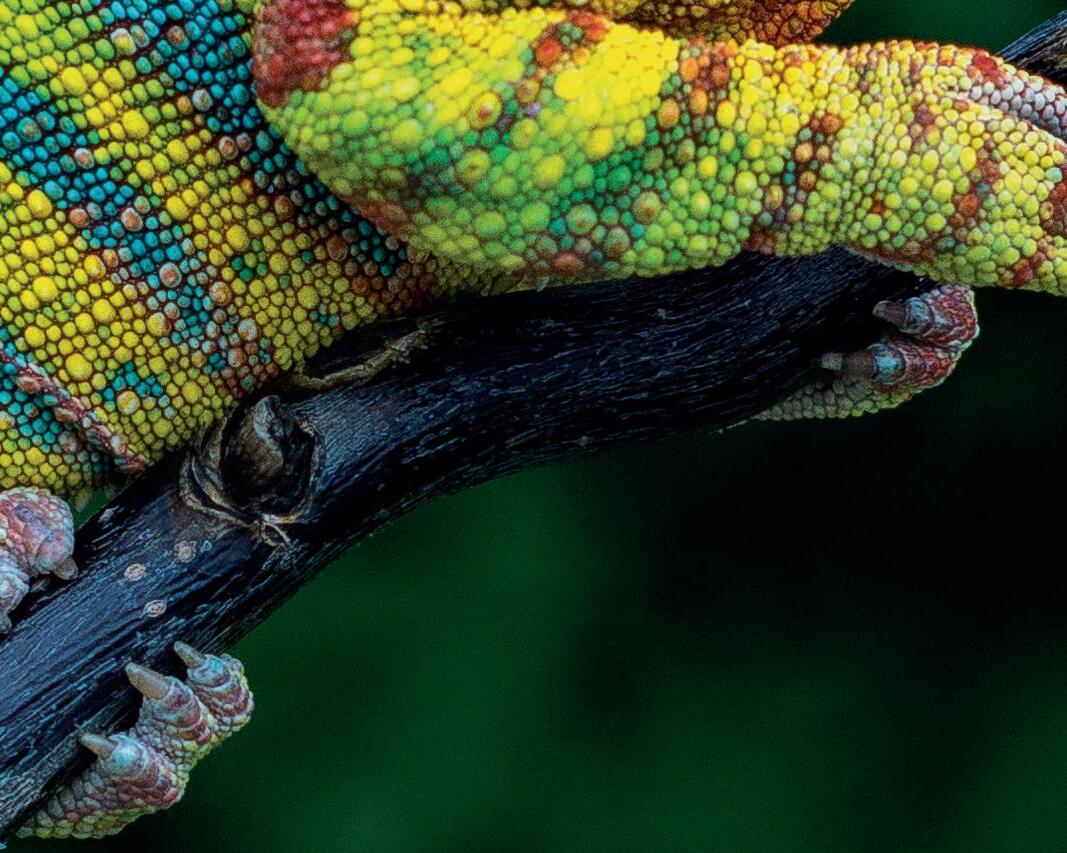

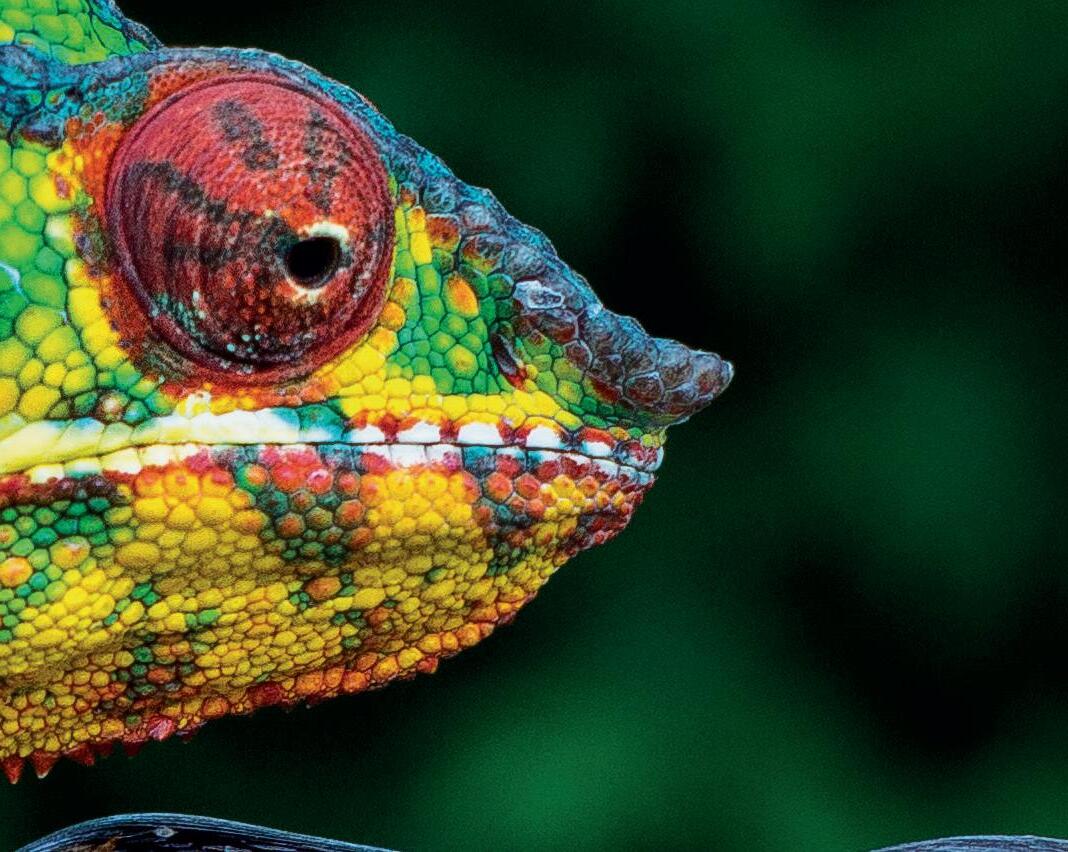
LONDON’S CALLING
The UK has extremely diverse and interesting bird life, but is there an imposter among us? How London’s parakeets became so iconic.









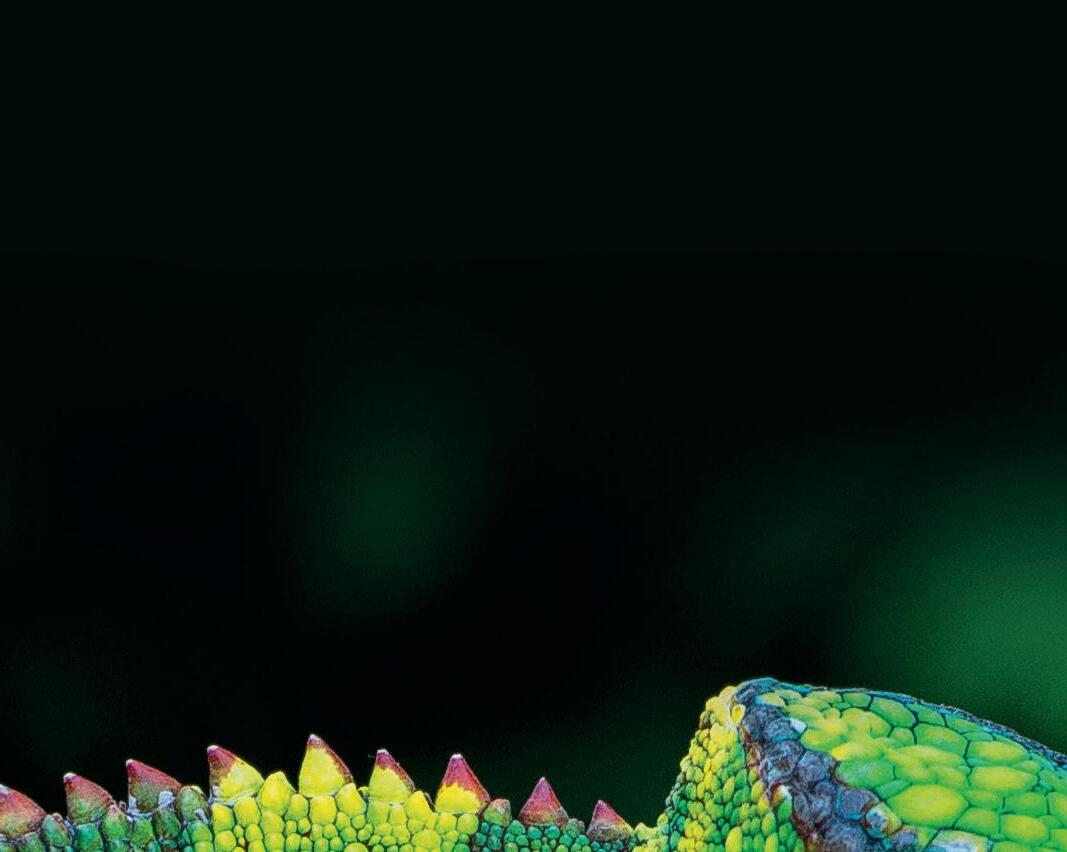

THE BIG FREEZE
Reptiles and amphibians are synonymous with hot temperatures. We defrost the species that can handle sub-zero conditions.


JURASSIC WORLD






Search the Galápagos archipelago and you are sure to find a colony of creatures that resemble Godzilla.







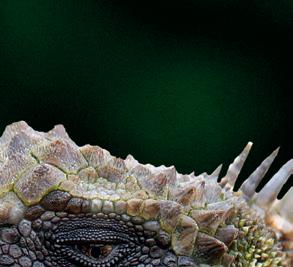



EXOTICS NEWS • RED-FOOTED TORTOISE • ENDOSYMBIOSIS • EASTERN BARRED BANDICOOT WWW.EXOTICSKEEPER.COM • DECEMBER 2021 • £3.99
COLOUR ME IMPRESSED
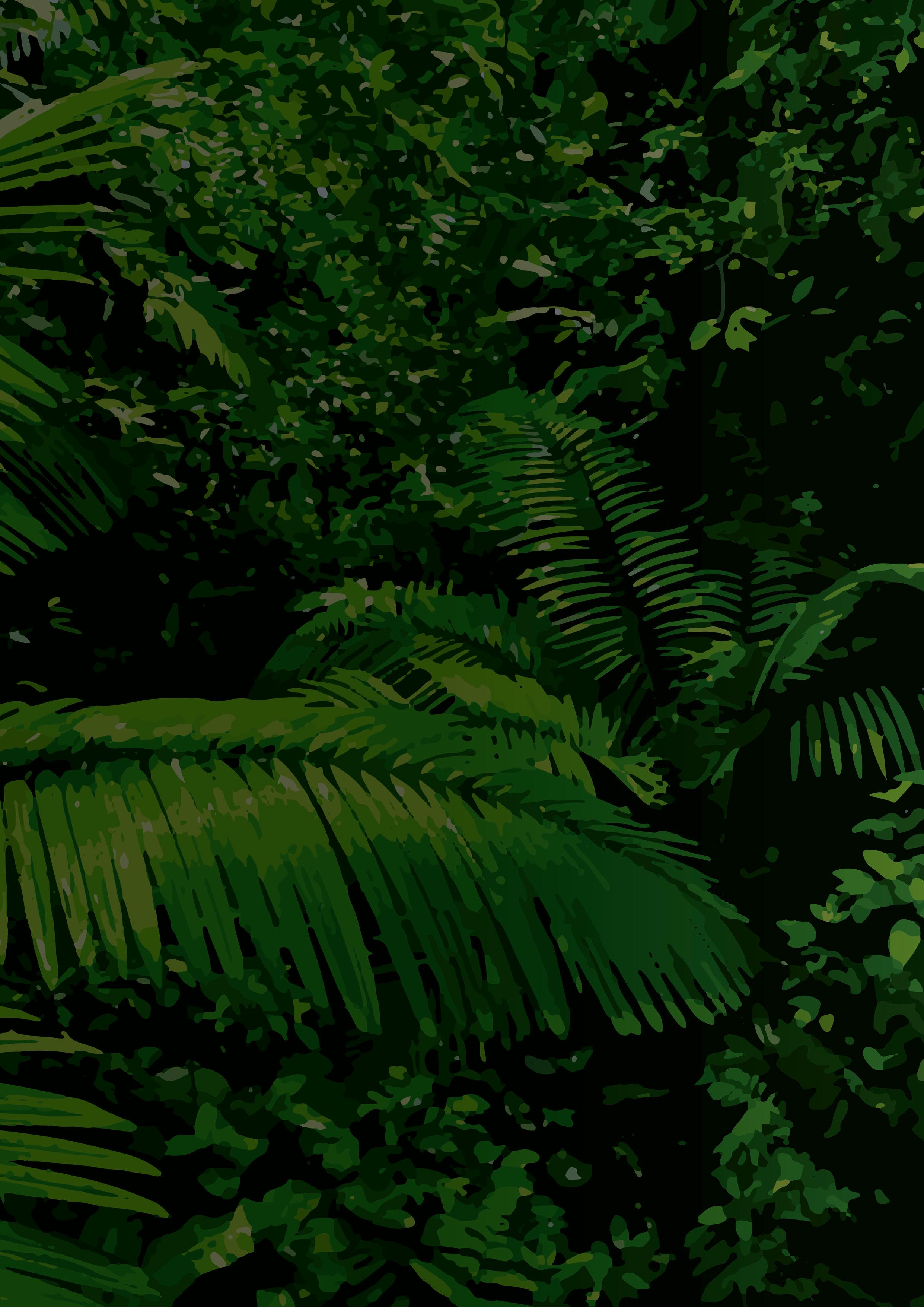







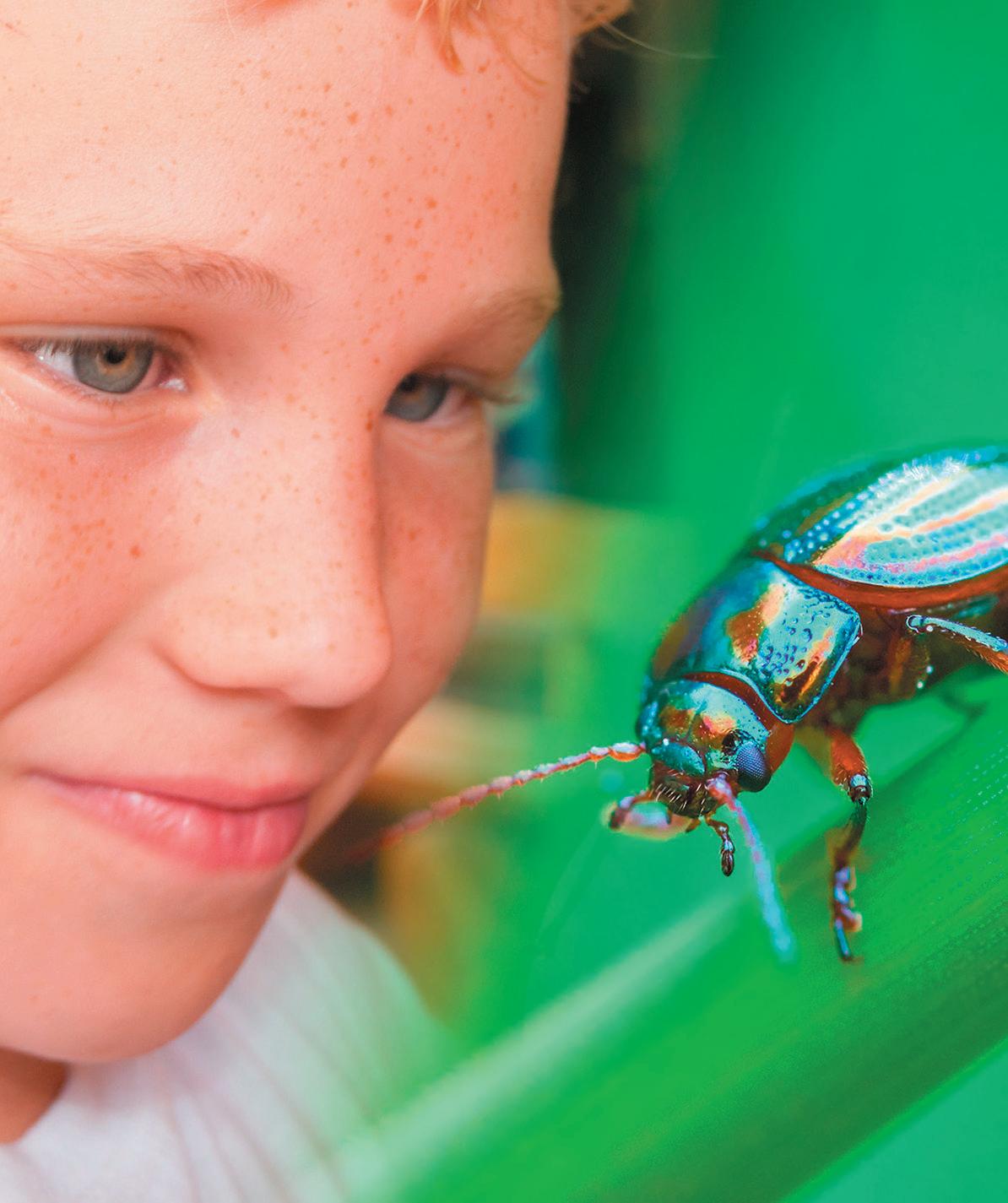









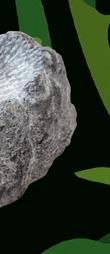
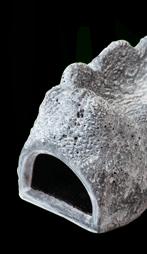

The Perfect Christmas Gift for the future reptile keeper Plantation Soil • Ampallo Plant • Wet Rock Cave Available from all good pet stores www.exoterra.com
CONTACT US EDITORIAL ENQUIRIES hello@exoticskeeper.com
SYNDICATION & PERMISSIONS scott@exoticskeeper.com
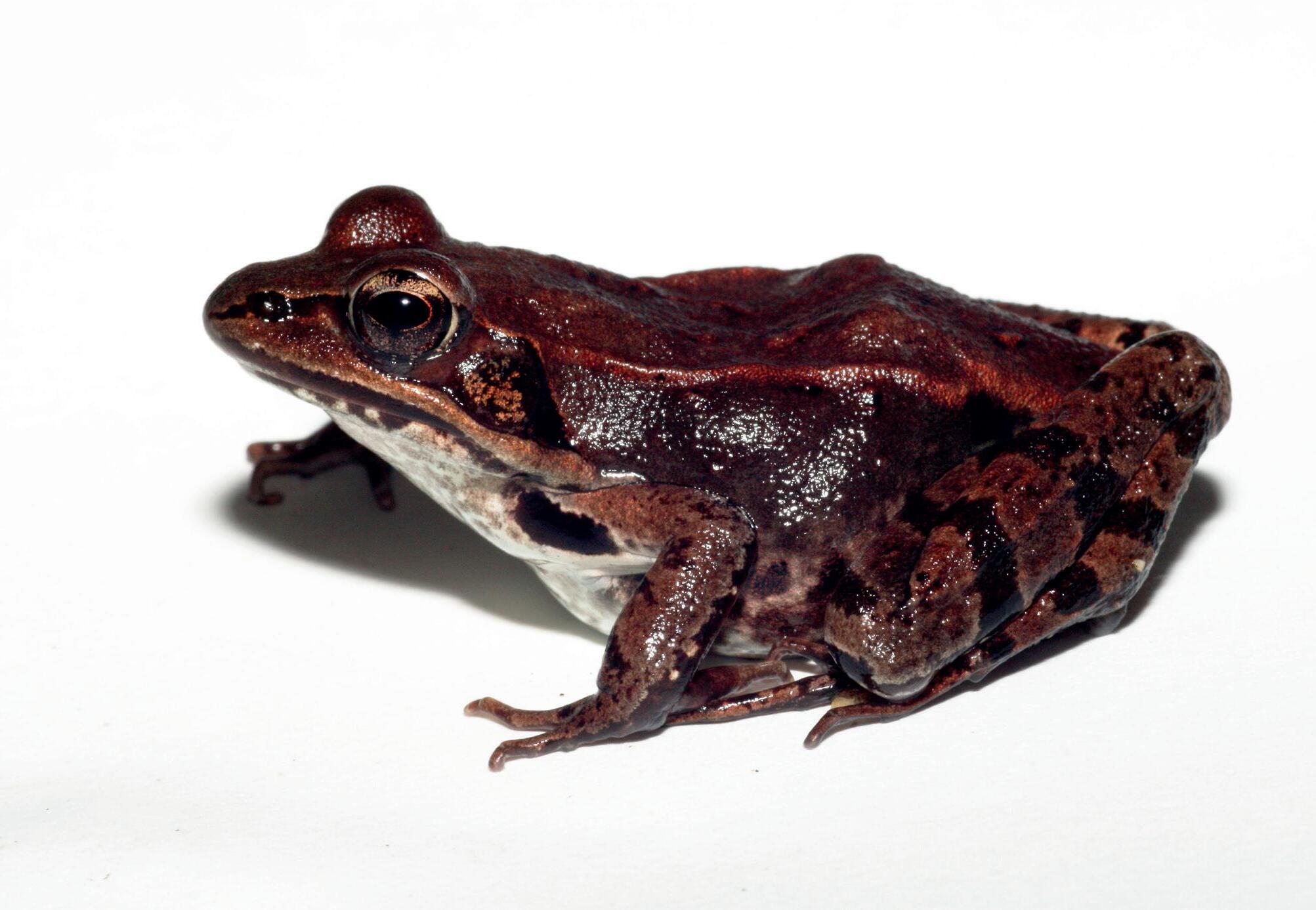
ADVERTISING advertising@exoticskeeper.com
About us

MAGAZINE PUBLISHED BY Peregrine Livefoods Ltd
Rolls Farm Barns
Hastingwood Road
Essex
CM5 0EN
Print ISSN: 2634-4684
Digital ISSN: 2634-4688
EDITORIAL:
Thomas Marriott

Aimee Jones
DESIGN:
Scott Giarnese
Amy Mather
Welcome to the December issue of Exotics Keeper Magazine. Looking back over the last year, it’s incredible to see the stark difference between this Christmas and last Christmas. With international travel restrictions being lifted every day, I for one, cannot wait to see what 2022 holds.

As we continue to refine our formula here at EK, we hope this issue hits every nail on the head with captive care focuses, conservation news, scientific breakthroughs and much more! The plan for 2022 is already looking extremely exciting as we introduce several new recurring features, one of which makes its debut at the end of this issue. We’re also etching ever closer to our EK Fund goals, to help support the conservation efforts we cover. We’ve had great feedback from readers who have seen the magazine grow but would love to hear more about the taxa that interests you, so please do get in touch.
Oh, and remember, it isn’t too late to treat yourself or a loved one to an annual subscription this Christmas! As we prepare for a much more ‘normal’ new year, we look forward to meeting our readership at shows, conferences, and meet-ups throughout 2022.
From everyone at Exotics Keeper Magazine, have a wonderful Christmas holiday and a very happy New Year.
. . . . . . . . . . . . . . . . . . . . . . . . .
Subscriptions
Follow us Every effort is made to ensure the material published in EK Magazine is reliable and accurate. However, the publisher can accept no responsibility for the claims made by advertisers, manufacturers or contributors. Readers are advised to check any claims themselves before acting on this advice. Copyright belongs to the publishers and no part of the magazine can be reproduced without written permission.
Front cover: Panther chameleion (Furcifer pardalis
Right: Wood frog (Lithobates sylvaticus

AVAILABLE NOW Pinkies 1g+ | Pinkies 1g+ | Pinkies 1g+ | Large Pinkies 2g+ | 10 Pack Large Pinkies 2g+ | Large Pinkies 2g+ Fuzzies 4g+ | Fuzzies 4g+ | Fuzzies 4g+ | Hoppers 6g+ | Small 10g+ | Small/Medium 15g+ | Medium 19g+ Medium/Large 23g+ | Large 26g+ | Extra Large 30g+ Ex-Breeder 35g+ | Ex-Breeder 40g+ Rat Pups 4g+ | Fuzzies 12g+ | Hoppers Small 20g+ | Weaner Small 30g+ | Weaner Medium 50g+ Weaner Large 70g+ | Small 100g+ | Small/Medium 130g+ | Medium 160g+ | Medium/Large 200g+ | Large 250g+ Extra Large 300g+ | Jumbo 350g+ 5 pack | Ex-Breeder 400g+ | Ex-Breeder 450g | Ex-Breeder 500g
02 06 16

02
EXOTICS NEWS
The latest from the world of exotic pet keeping.
06 THE BIG FREEZE
Defrosting the reptiles and amphibians who can handle sub-zero conditions.
16

SPECIES SPOTLIGHT

Focus on the wonderful world of exotic pets. This month it’s the Red-footed tortoise. (Chelonoidis carbonaria).
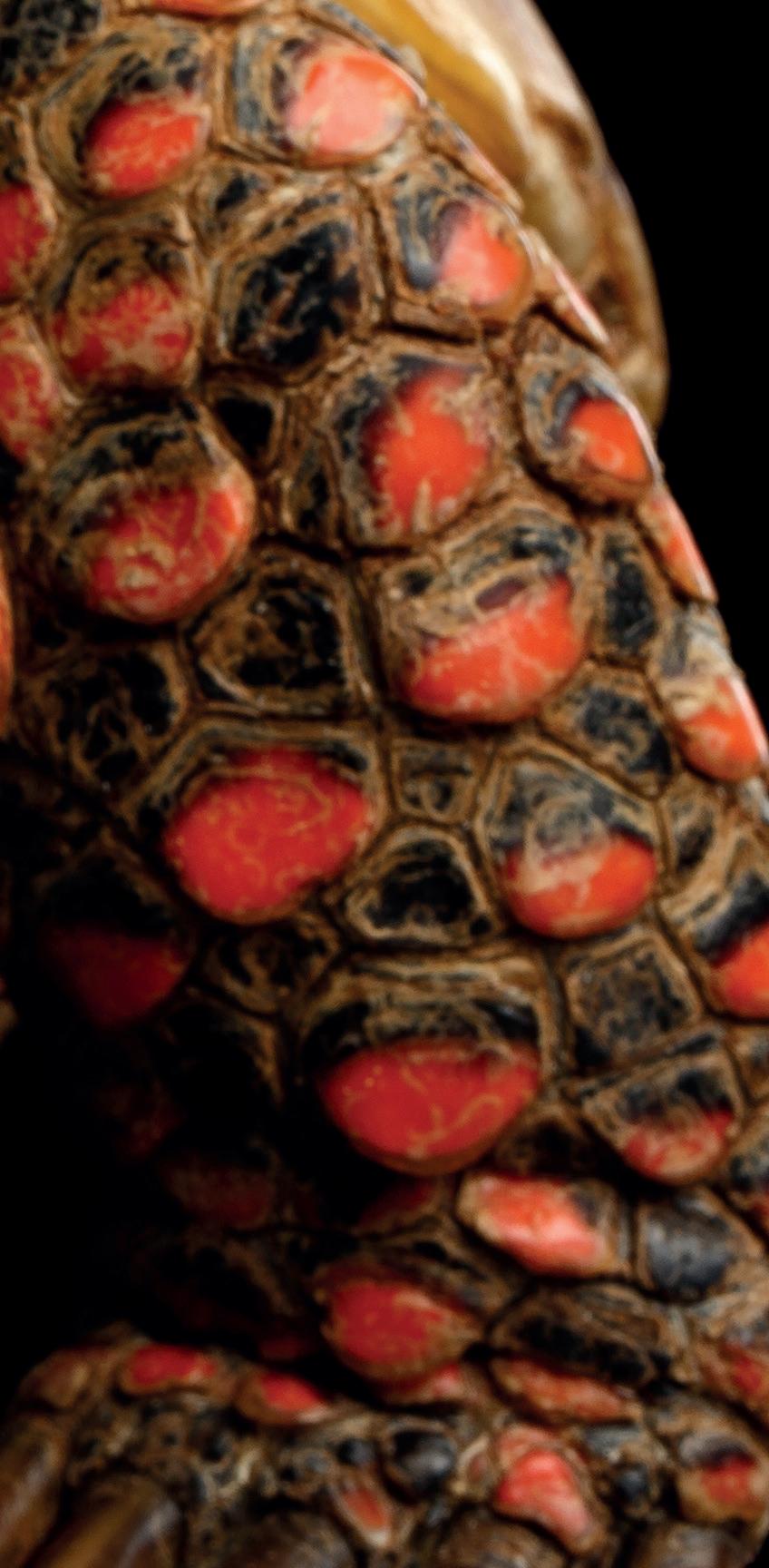
17
20 26 36
BACK IN A CRASH
Saving the Eastern Barred Bandicoot from extinction.
20
COLOUR ME IMPRESSED
How to get an A* in panther chameleon care.

26
LONDON’S CALLING
How London’s parakeets became such an icon across the UK.

36
JURASSIC WORLD
A Living Museum in the Pacific.

45 FASCINATING FACTS Did you know...?
46
ENRICHMENT IDEAS
Monthly tips on how the enrich the life of you pet.
EXOTICS NEWS
The latest from the world of exotic pet keeping


UK Shark-Fin Ban
The United Kingdom has become the first European nation to ban the import of shark fins and any products containing them. The ban should come into effect by the end of 2021, marking a milestone in the fight against the legal shark fin trade. Britain’s Animal Welfare Minister Lord Goldsmith played a crucial role in passing the new legislation.
Exotic Pet Report
The RSPCA (England & Wales) have teamed up with the Born Free Foundation to “reveal the state of exotic pet ownership and trade within the UK” by publishing a report detailing their concerns. This partly stems from the recent television documentary about the private ownership of dangerous wild cats and other animals, and incorporates the recent debates on keeping primates in the private sector and the on-going concerns about keeping snakes in unsuitable containers.
Sand Lizard Release
140 captive-bred sand lizards have been released on Forestry England-owned land in Dorset by Marwell Wildlife (Marwell Zoo) and the New Forest Reptile Centre in partnership with Amphibian and Reptile Conservation (ARC). The lizards were bred at Marwell and at the New Forest Reptile Centre, and they join the previous 200 released in the same area last year. In fact Marwell have released over 2,200 captive-bred sand lizards in 33 years of working with this species at the park.
“Shark finning is indescribably cruel and causes thousands of sharks to die terrible deaths,” said Mr Goldsmith. “That is why we are now banning the import of both of detached shark fins and shark fin products. Our action will not only help boost shark numbers, it will send a clear message that we do not support an industry that is forcing many species to the brink of extinction.”
Zoo-Reared Hellbenders Released
This summer over 800 Ozark and Eastern hellbenders, raised from eggs at Saint Louis Zoo, were released into their native Missouri Ozark Rivers by the Missouri Department of Conservation, in cooperation with the U.S. Fish and Wildlife Service. Since 2008 an incredible 9,476 endangered hellbenders, raised at Saint Louis (8,599 Ozark and 877 Eastern) have been released in Missouri.
Keas Trained to Use Touch Screens
Researchers at Willowbank Wildlife Reserve in Christchurch, New Zealand have trained a group of kea to operate a touch screen with their tongues as part of new
2 DECEMBER 2021 Exotics News
study into how they interpret virtual and real-world environments. They then presented them with a series of tasks that took place either fully in the real world, fully on-screen, or with a mixture of both. First, the kea saw a real ball placed onto a seesaw which tilted so the ball would roll into one of two real boxes. They correctly indicated which box they thought the ball was in by touching it with their beaks. They then performed the same task when all elements were replaced with virtual ones on a screen. Again they correctly indicated which box the ball was in.
The kea continued to select the box the ball was seemingly deposited into, which suggests they expected events on-screen to continue into the real world.
An author of the study, Patrick Wood, said training the birds to operate touchscreens was an interesting challenge. “A parrot’s beak is a lot like your fingernail: it won’t activate a touchscreen. So, we had to teach them to lick the screen with their tongues. Once they acquired this skill, they quickly gained confidence using the touchscreens and they really seem to enjoy it, too,” he said.
The researchers also presented the parrots with an additional experiment that pitted real and virtual objects against each other. This confirmed their findings were not due to simpler explanations, such as selecting the box tokens moved closest to, and that the birds showed no preference between real and virtual objects when they were directly compared against each other.
The findings are in contrast to a recent study which found 19-month-old human infants did not expect the real and virtual worlds to interact and therefore did not expect a virtual seesaw to deposit a virtual ball into one of two real boxes.
Lead author Amalia Bastos said “the findings open new possibilities for scientific investigations into kea behaviour and intelligence that could rely on this technology”.

“Our study validates the use of virtual reality and tasks blending the real and virtual worlds for use with this species. This potentially has implications for other parrot species as well,” she said. “However, further work is needed to determine whether kea with extensive experience of screens might begin to dissociate the real and virtual worlds, and what types of experiences might shift their understanding of screens closer to that of human infants.”
To test whether they expected physical events taking place in a virtual environment to be continuous with the real world, they were presented with a version of the task which had the same virtual animation of the seesaw as before, but it now appeared to deposit the ball into one of two real boxes placed in front of the screen.
The study, by the University of Auckland, shows the alpine parrot treats virtual and real-world environments as continuous and equivalent. (Source; www.nzherald.co.nz)
3 DECEMBER 2021 Exotics News
Fossilized Opal Insect
For the first time a fossilized insect has been found in a piece of opal on the island of Java in Indonesia. The stunningly preserved insect may be at least four to seven million years old.
Previously, plenty of ancient insects have been found in amber, a gemstone made of fossilized tree resin. When animals became encased in the fresh resin, it entombs them rapidly enough to preserve the remains, often with exquisite detail.
On a trip to Indonesia, gemologist Brian Berger purchased an opal that appeared to have an insect entombed inside. Insects trapped in amber are a common-enough sight, but in a slow-forming gemstone like opal it is incredibly rare. Berger had the stone analyzed by the Gemological Institute of America, which confirmed its authenticity.
Plants produce a sticky substance called resin mostly as a means to protect themselves. Under the right circumstances, the chemical structures of these resins can change over time, fossilizing into amber—occasionally trapping and preserving an insect inside.
This specimen probably started as a typical insect trapped in amber—but then it appears to have gone through a second process called opalization, where some of the amber turned into opal. Opals are essentially spheres of silicon dioxide with water combined into their chemistry. Organic specimens can turn into opal similar to the way fossilization turns bone into stone; paleontologists in Australia have recently found an opalized dinosaur fossil.

ON THE WEB
Websites | Social media | Published research

Each month we highlight a favourite website or social media page

THIS MONTH IT’S: THE HERPING HOUR PODCAST
The Herping Hour podcast brought to you by Lily Rose Reptiles & Dawn of Time exotics chats about reptile husbandry, best practice, species considerations, as well as special guests: www.facebook.com/theherpinghourpodcast

4 DECEMBER 2021
Exotics News
© Brian Berger

THE BIG FREEZE

Defrosting the reptiles and amphibians who can handle sub-zero conditions.

6
Spring Peeper (Pseudacris crucifer)

Reptiles and amphibians are thought to be synonymous with harsh deserts and tropical rainforests. Yet, across the world, weather is unpredictable. In many ecosystems, temperatures can spike and plummet within just 24 hours. To the reptiles and amphibians that have inhabited these areas for millions of years, even the extremes are just another day in the fight for survival.
Against all odds
Reptiles and amphibians are ectotherms, meaning they do not regulate their own constant internal temperatures and must rely on external sources, usually the sun. This means they are at the mercy of the environment around them.
Some, however, have developed adaptations that allow them to survive seasonal temperature lows below freezing point that would kill other species. A process known as supercooling prevents cell damage that would be otherwise fatal. The formation of ice crystals causes the damage, but by redirecting the use of solutes in the fluids of their bodies, species such as the wood frog (Lithobates sylvaticus), spring peeper (Pseudacris crucifer) gray tree frog (Hyla versicolor) and Western chorus frog (Pseudacris triseriata) can effectively offset and survive the process This gives them an ecological advantage not only for surviving unpredictable and harsh winters but being able to breed at a more opportune time, earlier in the season.
Solutes used in this way are known as cryoprotectants because they prevent the alignment of water molecules to form ice crystals. Usually, the
cryoprotectant utilised in amphibians is glucose, but it is glycogen in H. versicolor. Cryoprotectants do not prevent freezing entirely but decrease the size of the crystals formed, and importantly, slow the process down significantly which allows fast deployment of cryoprotectants throughout the body to minimise damage, and slow down or halt body processes. Cryoprotectants are produced in the liver and exported within minutes of freezing.
Wood frogs can end up with approximately 65% of their extracellular body fluids converted to ice. During this time, respiration, blood flow, and even the heartbeat stops. The body cells must rely on alternative fuels to remain viable. Studies so far have identified six genes that are activated during the freezing process that regulate biochemistry.
The Siberian salamander (Salamandrella keyserlingii) is another species that can stay frozen indefinitely, then thaw and walk away as if nothing happened. Folklore states that some of these salamanders may have frozen while mammoths still walked the earth, but scientists doubt these claims, as exciting as it would be if they were true. What is true, however,
8 DECEMBER 2021 The Big Freeze
is that they have been found to survive temperature extremes of -50°C. The species has mastered its environment wherein the bottom layers of the soil are frozen in a permafrost. They spawn in small ephemeral summer ponds, and have no competitors being second closest to the Arctic Circle of any amphibian, with the Siberian frog (Rana amurensis) being closest geographically.
While the details of the processes are not as widely known as that of the wood frog, Siberian salamanders can prepare for freezing by also altering their body fluids and producing

cryoprotectants, protecting their cells when they hit freezing point. Younger individuals are more susceptible and take shelter within rotting trees and debris where temperatures only reach about -15; many are killed when moving between ponds if a sudden frost appears. Adults are more resilient and will utilise nearby water sources to escape sudden freezing. Supercooling freezetolerant species are not invincible – they must have time to produce their cryoprotectants and not freeze below their supercooling point. They also seek insulated refugia to stave off the freeze as much as they can.
A cold snap
It’s not just amphibians that take extreme measures to prepare themselves for frosts during winter. The American alligator (Alligator mississipiensis) is renowned for its tactical preparation for frosts. Although alligators will typically overwinter in burrows, they have been observed submerged in ice-covered lakes and ponds across their North American range. When the surface of the water freezes over, the upper half of the animal is trapped in ice while the snout is poking above the surface allowing the alligator to breathe. Termed ‘icing’, this is essentially an extreme form of brumation – the same
The Big Freeze
Siberian frog (Rana amurensis)
process that popular captive species may undergo if they sense a seasonal drop in temperatures. Due to the extremely slow metabolic rate of the alligator in this state, breathing is barely required. It has been reported that alligators in this state can survive for over 8 hours without taking a breath.
Interestingly, not all American alligators do this. It is thought that those from the coldest regions of their range had naturally survived the cold spell and thus passed the technique onto their offspring. Studies of this method began in the 70s and was first published in 1982 when John M Hagan et al, recorded it in the South American Journal of Herpetology. Since then, researchers have recorded other populations of alligator’s struggle to break the ice with their snouts suggesting it is a highly localised adaptation.
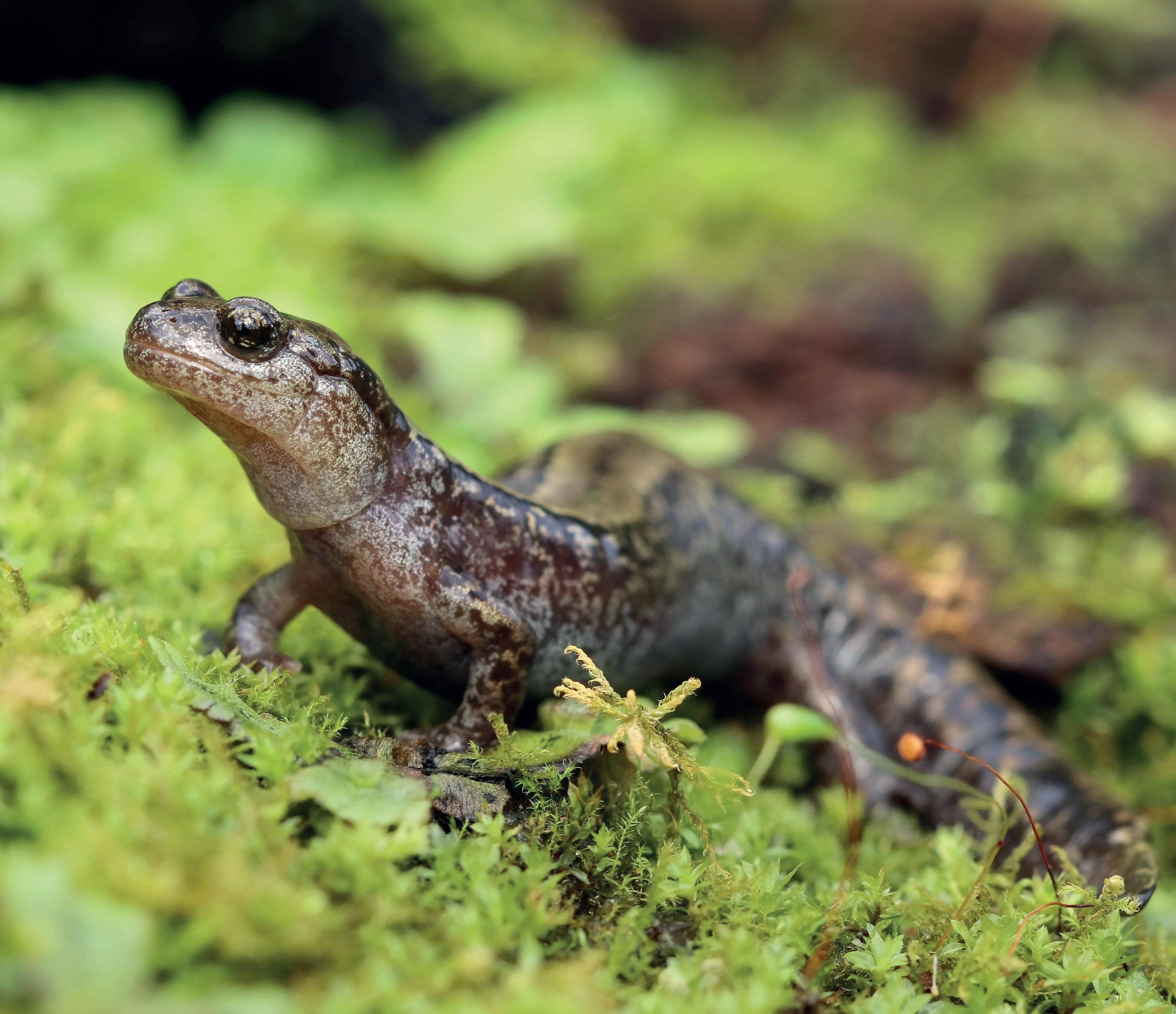
Of course, other animals in Florida are not so adaptable. During cold snaps in the winter months,
the invasive green iguanas (Iguana iguana) are often reported to fall out of trees as their metabolism slows, due to the extreme weather. As they have not adapted to cold spells naturally, they pose a genuine risk to people driving, as they appear to fall from the sky.
Some sea turtles can suffer disorientation because of extreme cold spells too. In February 2021, a severely cold storm dropped water temperatures on the East coast of the USA prompting a ‘cold-stunning event’. The event was the biggest of its kind, beating 2010s record of 4613 affected turtles in Florida waters. In 2021, 12,155 turtles were reportedly stunned and disorientated off the Texas coast. Of those, 5,300 were required immediate intervention and were rescued by Sea Turtle Inc. Although data suggests only around 35% of the affected turtles survived, the human intervention drastically supported the juvenile green sea turtle (Chelonia mydas) population in that part of the world.
DECEMBER 2021
10
Siberian salamander (Salamandrella keyserlingii)
Bum breathing
Although there are a lot of highly specialised adaptations in the natural world, few are quite as weird as ‘cloacal respiration’. Freshwater turtles from temperate areas of the world, such as the painted river turtle (Chrysemys spp.) will survive for up to 5 months submerged underwater, in extremely cold temperatures by breathing through (what is essentially) their bum.
Surprisingly, many reptiles and amphibians use the broader method of ‘cutaneous respiration’ to ensure they get enough oxygen into their body while their metabolism is slowed. Being cold-blooded, reptiles and amphibian health is largely dictated by their surrounding temperatures. The cooler the climate, the slower the metabolism and the less active the animal becomes. As such, many species have developed a way in which sufficient oxygen from the surrounding air or water, can be absorbed into the body through blood-vessel rich areas of the skin.

This method of ‘breathing’ is extremely important for sea snakes, where blood is moved away from the lungs and closer to the skin to help them survive long dives. Amphibians such as the hellbender (Cryptobranchus alleganiensis) use this method to survive underwater, where cutaneous respiration makes up around 90% of its total oxygen intake.
Turtles do this slightly differently. They will use two enlarged cavities known as cloacal bursae to suck water into their cloaca. This area has lots of blood vessels and well-ventilated skin, to allow the turtle to absorb plenty of oxygen. The turtle will then use those muscles to dispel the water, now filled with carbon dioxide, back into the pond or lake. For some species, such as the Fitzroy river turtle (Rheodytes leukops) this is their primary source of oxygen, making up almost 70% of their total intake. For other species, this method is used as a survival tactic, particularly in extremely cold climates.
Painted river turtles, common snapping turtles (Chelydra serpentina), and many other species use this method of receiving oxygen, to varying degrees, to deal with extreme climates. These species can stay submerged in extremely cold water for over 100 days. In fact, at the top of their range in Ontario, Canada, river turtles and snapping turtles can spend almost half of their lives in some form of brumation. During this time, the cold water slows their metabolism down tremendously meaning less oxygen is required and thus, the lungs become redundant, and the cloaca does all the work. It is thought these turtles can survive temperature drops as low as 2°C for a period of 11 days.
Below the surface
The viviparous or ‘common’ lizard (zootoca vivipara) has the widest distribution of any reptile on the planet. Stretching from Ireland to Japan and as far north as Scandinavia into the Arctic circle, this species is subject to extreme cold weather. Just how they survive these extremes is still a bit of a mystery. Like many Lacertid’s from temperate climates, common lizards will burrow into a hibernaculum once temperatures begin to drop.
Naturally, at cooler temperatures, the lizards are more likely to bury deeper into the soil to hibernate. Reports vary, suggesting the lizards will bury themselves anywhere between 10cm underneath the soil, right up to 40cm deep. This also varied across altitudes, with locales from higher altitudes burying themselves deeper to avoid extreme weather. Researchers also discovered that the lizard could tolerate, on average, a minimum of -2C to -4C without mortality. This is the parameter at which the lizards’ internal liquids would be prone to freezing. Of course, extended periods at this temperature would seriously diminish the animal’s survival rate.
DECEMBER 2021 The Big Freeze
11
Gray tree frog (Hyla versicolor)

The viviparous or ‘common’ lizard (zootoca vivipara) has the widest distribution of any reptile on the planet.
Common lizard (Zootoca vivipara)
We know that common lizards avoid the cold, rather than employing anti-freezing superpowers like the wood frog, but how do they manage this in the coldest winters of Siberia? Researchers in Russia discovered that different locales of the species are much hardier than others, especially when compared to their European cousins. Bermann et al, writes:
“It should be emphasized that the minimum temperature endured by common lizards from the Western Siberian populations (-10 C) is 2.5 times as low as that of conspecific lizards from Europe; so far, this is the record level of cold hardiness for adult reptiles.”
“It may seem that the observed level of cold
cold hardiness (-10 C) is sufficient for the lizards to survive in these territories. Thus, considerable cold hardiness of the common lizard and favourable hydrogeological conditions of some territories (the presence of talik zones) determine the wide distribution of the species in the extremely cold regions of Siberia.”
The common lizard’s wide distribution over such a huge percentage of the earth is possibly due to them finding these ecological niches. With areas closer to big lakes generally providing warmer conditions beneath the soil, they inhabit further and further into areas that would otherwise be considered extreme. It is the geological significance below the surface that allows common lizards to survive such cold climates.
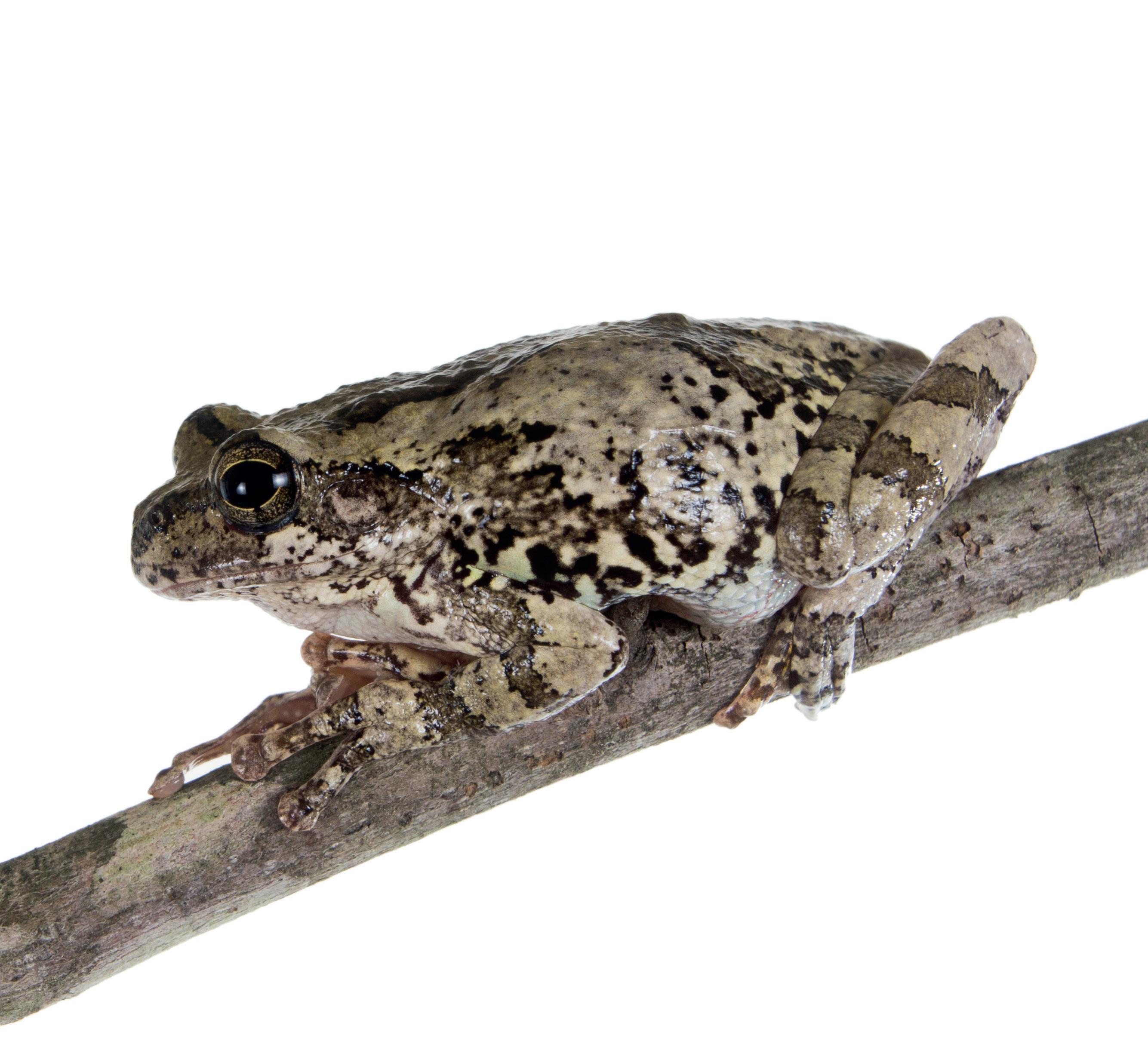 The Big Freeze
Gray tree frog (Hyla versicolor)
The Big Freeze
Gray tree frog (Hyla versicolor)
DID YOU KNOW
Some amphibians are capable of surviving temperatures below -50°C leading some speculation that we may one day defrost a salamander from the ice age, even though this is extremely unlikely.

Although there are around 19,000 reptile and amphibian species on the planet, only 5 amphibians and 1 reptile are found within the arctic circle.
Some illusive species, such as mudpuppys (Necturus maculosus) are much more active during the winter months as they move upstream. Because they live in fastmoving water which holds oxygen all year, they are generally protected from the extremes of winter.
Most reptiles will burrow into the ground to avoid the extremities of winter. This has meant different populations of the same species will be more resilient to sub-zero temperatures.

In captivity, providing temperature gradients has been considered the norm for decades now. Over the years heat mats, spot bulbs, projectors and various other products have come and gone, adapted, and developed and today we have a much better understanding of how to heat our reptiles. With many keepers successfully keeping a wealth of species outdoors and even more tropical species in greenhouses, we are beginning to understand the biological requirements and hardiness of captive reptiles.
Providing even more drastic gradients than ever before is starting to become normalised within the hobby and there is plenty of research to suggest this is the way we should be moving forward. Even bearded dragons (Pogona vitticeps) will
regularly face temperatures below 10°C, much cooler than most households. This is not to say we should be encouraging extremities, as shielding our animals from the perils of nature is considered the main plus of captive care. We must also recognise that our captivebred animals are reasonably far removed from their wild counterparts. Without further research into the tolerances of our captive-bred bearded dragons, avoiding these natural cycles is probably encouraged. However, we are now equipped to provide a full light spectrum to mimic heat from the sun using products on our shelves. Considering how we can advance husbandry to allow our reptiles and amphibians to have choice over a much greater range of temperatures is certainly something for keepers to consider.
Title 14 DECEMBER 2021 No Need to Feel Blue
14
Spring Peeper (Pseudacris crucifer)














































































“Head and shoulders above the rest” Disinfectant Wipes For Everyday Use Effective against bacteria, fungi and viruses; use as a multi-purpose disinfectant impregnated surface wipe. Suitable for use on equipment such as thermometers, and for hand decontamination when washing facilities are unavailable. www.f10products.co.uk
SPECIES SPOTLIGHT
The wonderful world of exotic animals
Red-footed tortoise (Chelonoidis carbonaria)
The red-footed tortoise is a species of tortoise from Northern South America. Their distribution stretches across the majority of Brazil, up to Guyana and as far South as Argentina. As such, they thrive in a variety of habitats from rainforests to savannah grasslands. This species is also thought to be absent from much of the Amazon basin as they actively avoid muddy areas due to their tendency to dig and burrow.

Although this higher humidity environment might be more specialist than some of the Mediterranean tortoises, their foraging habits make them much more forgiving in their dietary requirements. These tortoises will feed on fallen fruits through the wet season, which would usually be considered too rich and fatty for their European counterparts. The geological structure of South America does not provide the limestone base found in arid Europe and thus the shoots are not as rich in calcium.
Therefore, a light dusting of calcium powder on a richer 60% fruit, 40% foliage diet is required to keep red foots healthy. Their frugivorous nature makes them important seed-dispersers across their range. Red-footed tortoises have also been known to eat a good amount of carrion, giving them extra protein and calcium requirements when needed.
In captivity, red footed tortoises should be kept at 60-80% humidity, meaning wooden vivariums are often the optimal choice of enclosure, but tortoise tables with suitable moisture-retaining substrate are also an option. Ensuring that the enclosure replicates the heavily forested areas these tortoises come from is key. Creating a large indoor/outdoor enclosure with high levels of UV and no vegetation or cover is a common mistake as red foots prefer a very different environment to Mediterranean tortoises. Providing zone 2 lighting is most appropriate for red-footed tortoises. During the summer months, an outdoor enclosure with dappled shade is ideal for these tortoises and allows them to receive good levels on enrichment.
Red foots should be fed on a split of fruits and greens. Fresh tropical fruits such as papaya, cantaloups and mangos are great, but they will eat most fruits. Avoid banana or citrus and like other species, always avoid watery greens like iceberg lettuce or cucumber due to its poor nutritional content. Animalbased protein should also be supplied once a week. Different keepers will provide this in different ways, but shrimp, steamed chicken, boiled eggs, waxworms and even dry cat food can be used.
Species Spotlight
16 DECEMBER 2021







17 DECEMBER 2021
IN A CRASH Saving the Eastern Barred Bandicoot from extinction.
BACK
Eastern barred bandicoot (Perameles gunnii)
Australia’s flora and fauna is fragile, with over 80% of its animals being endemic to the nation. As infrastructure continues to develop, many species are under threat and with such a large percentage of species found nowhere else on the planet, conservationists rarely have a second chance to save a species once their population plummets. However, one species has gone against the grain. In a country first, the previously-declared-extinct Eastern barred bandicoot (Perameles gunnii) has been reclassified as an extant species.
The Eastern barred bandicoot is a tiny marsupial, previously common in grasslands and plains in South-East Australia. As infrastructure developed across Victoria and feral cats and foxes became more abundant, the bandicoots range diminished. Eventually, in 1989, the last remaining population of around 150 animals were identified just outside the town of Hamilton, South of the Grampians National Park.
Conservationists knew they needed to act fast to save the species and the ‘Eastern Barred Bandicoot Recovery Team’ was formed. They established various breeding projects, protected by fences from feral predators, in suitable areas across their natural range. However, the move into captivity prompted the reclassification of the species to ‘Extinct in the Wild’. In a bid to breed more bandicoots, with stronger genetic fitness and a greater resilience to the impact of climate
change, conservationists bred some of the population with the species nearest relative, the Tasmanian Eastern barred bandicoot (P. gunnii gunnii).
Since captive breeding efforts worked so well, new locations have been identified for release, as well as three islands, safe from predators, that the bandicoots can now call home. Community initiatives and awareness campaigns have helped restore wild areas and bring attention to the terrible ecological impact of feral and domestic cats.
In an ingenious conservation move, Maremma dogs are being used to protect the bandicoots. A nature reserve in Western Victoria, deemed suitable for release of the bandicoots has also had 146 sheep and two sheep dogs released. The dogs, McKinna and Quinton would watch the flock of sheep across the 50-hectare reserve. Already trained to avoid the
18 DECEMBER 2021 Back in a Crash
bandicoots, the atmosphere created by the dogs prevented feral predators from accessing the land and predating on the bandicoots.
Dr Amy Coatsee of Zoos Victoria told the Guardian: “These dogs aren’t great pets – they like to have a job. They’re big, shaggy, beautiful animals, but they will create what we call, a landscape of fear… The dog is a bigger predator than the fox. It doesn’t necessarily stop the foxes passing through, but it makes them more cautious, and they won’t stop to look for prey.”
Now, over 30 years on from the inception of the Eastern Barred Bandicoot Recovery Team, 1,200 animals have been released back into the wild. In September 2021, the Eastern barred bandicoot was changed from ‘Extinct in the Wild’ to ‘Endangered’. These conservation milestones are rare. Victoria Government donated $5.5 million to the cause,
with funding also coming from the Commonwealth Government, Conservation Volunteers Australia and Tiverton Property Partnering.
Minister for Energy, Environment and Climate Change, Lily D’Ambrosio said: “This success is due to the efforts of every member of the recovery team. Community volunteers have played a big role at many of the reintroduction sites, helping check fences, count bandicoots and remove weeds and pests.”
“It is wonderful to see so many agencies and organisations working together to achieve this fantastic outcome for the Eastern Barred Bandicoot.”
“We are excited to announce the change in conservation status for the Eastern Barred Bandicoot from extinct in the wild to endangered – it is an incredible first for Australia,”

19 DECEMBER 2021 Back in a Crash
COLOUR ME IMPRESSED
How to get an A* in panther chameleon care. We go back to school with Bill Strand, Founder of the Chameleon Academy.

 Panther chameleon (Furcifer pardalis)
Panther chameleon (Furcifer pardalis)
It is no surprise that panther chameleons (Furcifer pardalis) are some of the most desirable of all lizards.
Coming from the remote Northern and Eastern tropics of Madagascar, this species has a uniquely bold character expressed through their broad spectrum of colours, territorial aggression, and vibrant displays. However popular, this species is going through some of the greatest husbandry changes and advancements of all reptiles.
When it comes to contributions to the world of chameleon-keeping, few names are as highly regarded as Bill Strand. Founder of Chameleon Academy, Bill has created endless resources from audio care guides to posters and care sheets, as well as award-winning, public-facing real-time breeding projects. His goal is to improve the husbandry standards of chameleons across the globe using a whole string of outreach projects to achieve this.
“The Chameleon Academy is needed because chameleon husbandry is going through the most dynamic change in 20 years” explained Bill. “In the last five years, we have seen significant shifts in hydration strategy, UVB education, and supplementation understanding. Without a central location to gather and develop this information important parts get lost.”
“I actually started chameleon community education over 20 years ago working with educational websites and founding the chameleonnews.com website back in the early 2000s. I got excited for podcasting as a medium because it made it easy for me to interview breeders, keepers, scientists, and veterinarians from around the world. After over 200 episodes it became difficult to sort through the information and I decided
I needed to create the chameleonacademy.com website that consolidated all the information and became a content index that had text, podcast, and video resources.”
Panther chameleons have been kept in captivity since the very early days of herpetoculture. Since then, the mainstream appeal of the weird and wonderful chameleons of Madagascar has built its own subculture within the hobby.
“Panther Chameleons are one of the top two chameleons bred in the world” explained Bill. “This is due to their hardy nature and incredible colour. Since it has become an entire hobby of its own, it has become the best first chameleon species simply because of how many people have deep experience with them. There is such a well-established support network for people to get started under.”
Panther chameleons in the wild Panther chameleons are a relatively large (sometimes up to 50cm), diurnal species that spends much of their time in small trees. Despite being arboreal, they are generally found much closer to the forest floor, when compared with other chameleon species. They
22 DECEMBER 2021 Colour Me Impressed
are solitary animals and extremely territorial. Despite often being housed in pairs in captivity, keepers should consider providing separate enclosures for each sex and only pair them up when they reach breeding season.
Although technically endemic to Madagascar, the panther chameleon has been introduced to the nearby islands of Mauritius and Réunion and is considered ‘least concern’ by the IUCN. Like most chameleons, panthers are relatively short-lived with an average lifespan of around 5 years in captivity and less in the wild. Once they hatch, their mission is to get as large as possible, as quick as possible, battling with Madagascar’s volatile seasons. Because of this, they can be ravenous feeders and keepers should be wary not to overfeed their animal.
One of the factors that has helped to establish panther chameleon
keeping as its own standalone hobby is the vast range of locales. Almost every colour is exhibited across different populations, except for purple. However, breeding within the hobby has created individuals, proving the gene does exist.
Panther chameleon locales
Despite being able to adjust their vibrant colours, the appearance of each panther chameleon is largely determined by their locale and sex. There are around 20 recognised locales of F. pardalis, all with unique colouration. Chameleons from the Nosy Be Island will typically show bright turquoise and blue colouration, whereas those from Nosy Faly will tend to appear whiter. Chameleons from the Northwest mainland will have pink hues, giving them their colloquial name the ‘pink panthers’. Ambilobe panther

chameleons (named after the town in North Madagascar), also have distinguishable orange and blue patterning. Females are generally drabber in their colouration as they do not need to be as expressive in their mating rituals but are almost as territorial as their male counterparts.
Bill added: “Even with the wide range and elevations of panther chameleons there still does not seem to be differences in care across the locales,” explained Bill. “There have been some reports in the past of breeders having more trouble with some locales, but it has been hard to find consistent enough data to pin that specifically on the locale and not on a certain import batch or other parameters. This is actually quite significant considering the vast geographical area that panther chameleons come from so I would have actually expected there to be difference. But it, so far, appears not to be the case.”
23 DECEMBER 2021
Panther chameleon care
Chameleons offer a wonderful challenge to any exotic pet keeper looking to try something a little different. Their specific requirements make them an inspiring pet that demands a good level of ‘new’ understanding beyond the traditional terrestrial set ups we would typically house bearded dragons, leopard geckos and corn snakes in. Panther chameleons can be housed in mesh, hybrid or glass enclosures depending on the level of environmental control available to the keeper. All should be wellventilated and well planted.
Wild panther chameleons typically bask on forest edges, trees overhanging roads or rivers and open areas of vegetation. As such, providing an enclosure that is not too densely vegetated whilst also offering multiple areas that the chameleon can be entirely hidden from view and UV radiation is key to a successful set up.
“Chameleon husbandry is ever evolving, and the community does not move forward at the same

Bill continued: “Over the last few years we have been moving to a nighttime fogging/misting hydration model to better replicate what is encountered in the wild. People implementing this in captivity can notice pretty quickly how the chameleon drastically decreases its drinking during the day. That is because it is not dehydrating during the night. You have a clash of people who have misted during the day for decades and see no reason to change butting heads with progressive keepers who feel that going more natural is a reason to do it in itself. As advisors we must be aware of these two philosophies and be prepared for beginners having a background in one or the other.”
When it comes to reptiles, establishing a good, healthy environment that meets the temperature, humidity and UVB requirements is essential. Panther chameleons should be provided with UVB for vitamin D3 synthesis. The dose of UVB, or how much for how long, is being actively tested in the community. Presently, panther chameleon females have been shown to be able to fully calcify
Me Impressed
Colour
Bill added: “Much of the community is stuck on believing that chameleons must have screen cages, or they will die. This is an oversimplistic view as proper cage type depends on how much the ambient conditions must change to match the care sheet. The bottom line is that screen cages are great in some conditions and glass cages are appropriate in other conditions.”
“The hardest part of chameleon keeping is often just getting the set-up correct in the beginning. It is when the keeper cuts corners and gets a cage too small or a sub-standard missing system or a cheaper UVB bulb that things start to go sideways.”
Last but by no means least, is the nutrition and heating requirements of chameleons. With the use of good UVB lighting, calcium without D3 should be used most often. Adults should be fed around 5 appropriately sized feeder insects every other day. These should all be dusted with calcium supplements but multi-vitamins and D3 should only be used twice a month.
Bill continued: “We have found that keeping chameleons at temperatures on the high range of their tolerance zone and feeding them a lot of food can produce larger chameleons and larger clutches of eggs. As we humans equate large with healthy, this aspect of husbandry has not been addressed much until recently. Now, we are becoming more aware that the excessive fat pads and extra sized clutches of eggs are placing extra stress on the chameleon’s body. This affects panther chameleons, but it is mostly felt in the Veiled Chameleon community where infertile clutches three times the natural size is routinely encountered and death from egg binding is an ever-present danger. So, we have been working with lowering the basking temperature and reducing the feeding. We must be careful as lowering the temperature too far and reducing the food too much will cause stunting which isn’t healthy either. So, this is a parameter firmly in transition but expect to see more research for both species.”

Colour Me Impressed
The Chameleon Academy
LONDON’S CALLING
How London’s parakeets became such an icon across the UK.
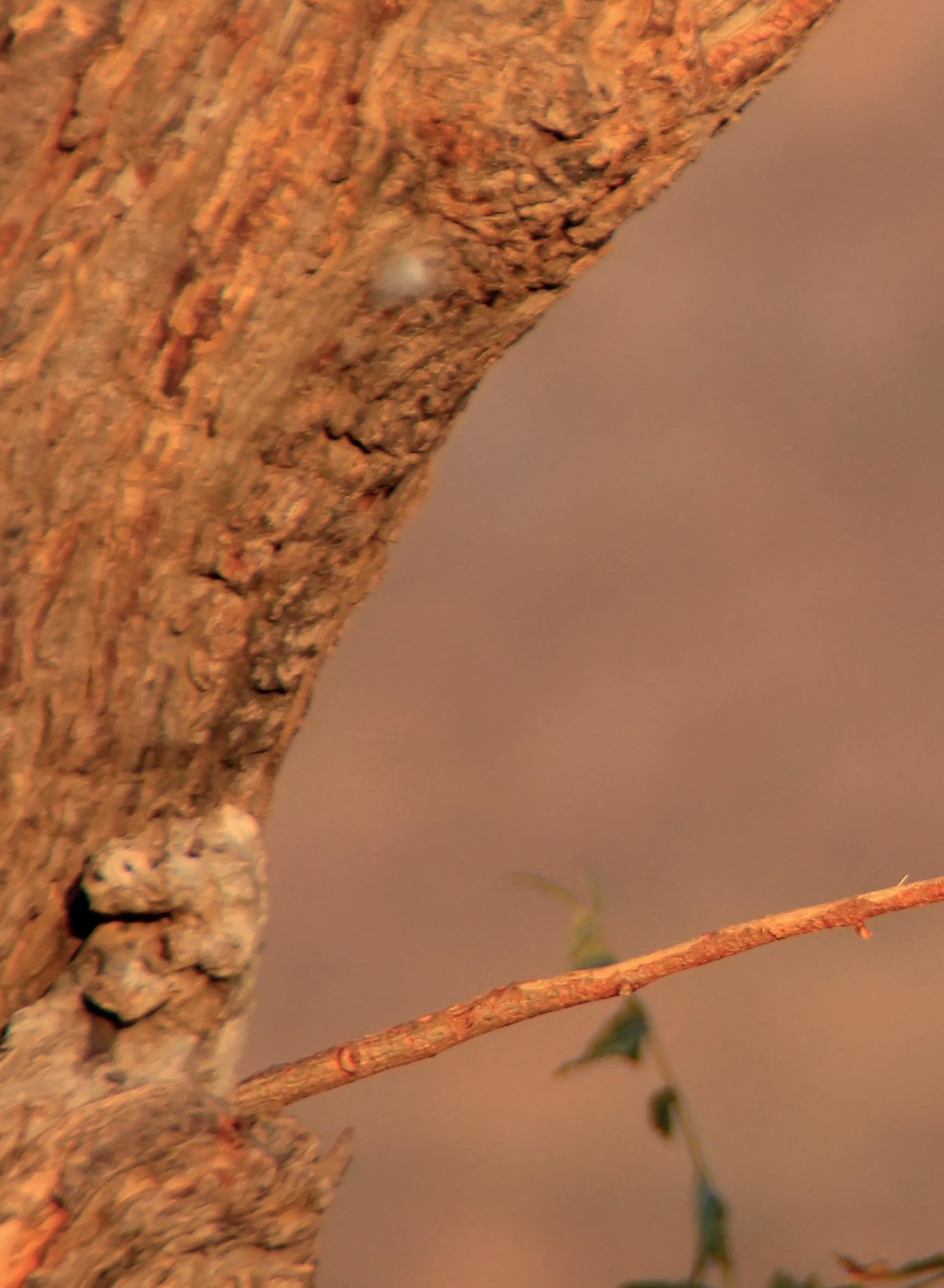
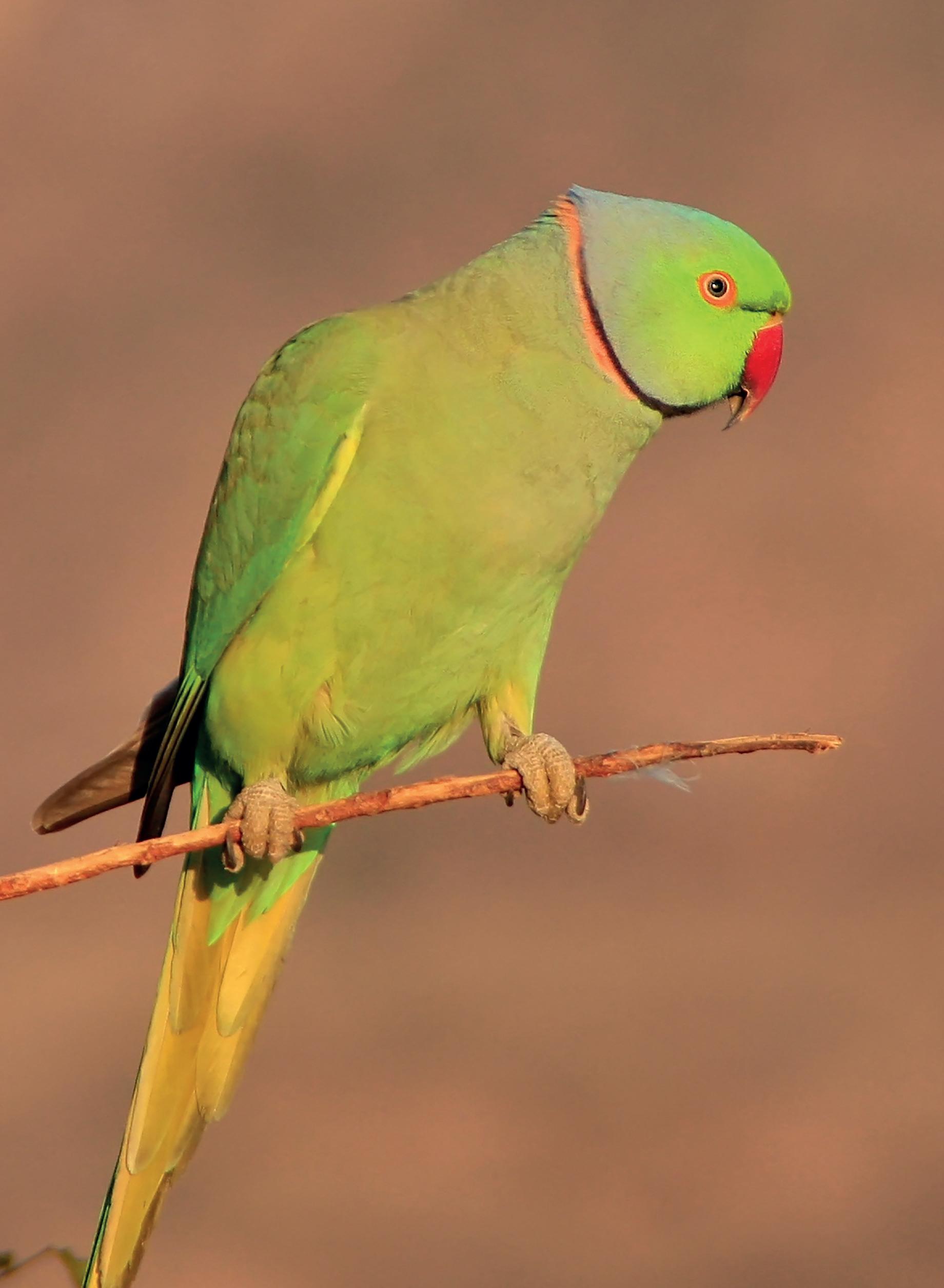 Ring-necked parakeet (Psittacula krameri)
Ring-necked parakeet (Psittacula krameri)
The UK has extremely diverse and interesting bird life. Despite countless exotic birds from all over the world visiting our shores, one species sticks out like a sore thumb, and it looks like they’re here to stay.
The world is your oyster
The ring-necked parakeet (Psittacula krameri) is one of the most adaptable and opportunistic parrot species on the planet. Native to a broad range across Central Africa and Asia, this species is now a common sight in highly urbanised areas of Europe, the Middle East and several US states. Cross populations of the two Indian subspecies P. krameri manillensis and P. krameri borealis have been of interest to tourists visiting London since the 1960s. Since then, this exotic bird has established itself in many major cities all over the UK, stretching right up to Edinburgh. Copying opportunistic garden birds, these highly intelligent animals have learnt to capitalise from their bold nature and bright colours.
An unlikely introduction
There is a lot of mystery surrounding the introduction of parakeets to the UK. From rumours of Jimi Hendrix releasing a pair of birds on Carnaby Street in the 1960s, to damaged aviaries during the great storm of 1987, the truth is likely to be much less exciting.
In fact, a study by several London-based Universities led by Steven Le Comber in 2019 suggests that the
initial release of these birds was most likely linked to health concerns related to ‘parrot fever’. This disease, known scientifically as Chlamydia psittici had a 15% mortality rate and although it is thought to have only affected around 800 people, global news platforms incited significant fear around keeping birds. Despite records of parrots being kept in the UK dating all the way back to 1504, where Prince Henry Tudor (and later, Henry VIII) kept an African Grey Parrot (Psittacus erithacus), these new fears prompted the British public to release their birds instantly.
It was later discovered that although this disease was dormant in Amazon parrots (Amazona .sp) from Argentina, it was awakened by the conditions used to import these animals from the wild. This led to the Parrot (Prohibition of Import) Regulations of 1930. Nowadays, the effects of ‘Parrot fever’ or psittacosis are mild and generally likened to a flu. Although mostly found in parrots, many different birds can carry the virus, which is then referred to as ornithosis. This disease cannot be transmitted between humans. UK Government suggests around 25-50 people contract the illness each year from inhaling pathogens from dried bird waste. Of course, most of these cases are private keepers, poultry farmers and veterinarians. Although the disease poses very little risk today, those
28 DECEMBER 2021 London’s Calling
with weakened immune systems should take extra caution when keeping pet birds, by ensuring the cages are cleaned regularly and new birds are observed and quarantined appropriately.
Of course, the first instances of psittacosis at the end of the 18th Century and ensuing pandemic in 1929 did prove to be extremely worrying. Medical professionals had very little understanding of zoonotic diseases and thus wrongly linked the new flu to being in
contact with any bird. With so many keepers releasing their animals into the wild in a short space of time, populations quickly formed and continued to breed throughout the 20th Century.
In London alone, 500 parakeets were counted during a roost survey in 1983. By 2002 this number had increased to 5,800 over five different nest sites. Just a decade later, in 2012, The London Bird Atlas counted 32,000 parakeets across the city.

Adaptability
Although societal fears likely prompted the release of many birds in the early 20th Century, there are many contributing reasons why ring-necked parakeets have found themselves in the wild over the years. John Hawkins, Section Supervisor at Just for Pets Coventry, has been keeping and breeding birds for over 25 years, including ring-necked parakeets. He told Exotics Keeper Magazine: “They were really popular as a beginner’s parrot. They were inexpensive, commonly available, they can be trained to talk and with the help of various videos on Youtube etc where they are shown playing peekaboo and doing all sorts of tricks they’re always in high demand. People say they want a Ringneck, expecting it to turn out like that. Unfortunately, the truth is there’s very few that actually will.”
“People will buy them as young aviary birds because they’re much cheaper than hand-reared babies. These inevitably turn out to very nervous and un-handleable. They take a long time to tame down and don’t do what the person expected it to do, like the ones they’ve seen on the internet. Ring necks naturally go through a ‘bluffing’ stage which can lead to unintentionally reinforced unwanted behaviours such as biting. They’re a big flock bird so they naturally squabble and fight over food etc. This is why they do so well as an invasive species, they will readily defend themselves and even challenge other birds. When the new owner tries to tame them, they will also do that to you. You try to approach them, and they’ll go through a stage where they try to bite through the bars. They’re not cuddly, they like their own personal space and it takes a lot of time and patience to try and tame them. Unfortunately, they are one of the most common species that people get, then quickly rehome or, obviously in some cases, simply let go.”
29 DECEMBER 2021
London’s Calling
Unfortunately, romanticised ideals of pet birds have been pushed by media outlets for many years. Although it is possible to keep parrots very successfully and provide an enriching life whilst also having a great pet, this often takes a lot of time and dedication. Parakeets, despite their size can be some of the more demanding of the species. However, they are also underestimated in other aspects too, even by the more dedicated of keepers.
“They’re also really good escape artists too. They’re so clever, so quick and agile that when people try to tame them, they often don’t realise their ability and determination to get away and will very quickly learn how to open cage doors or squeeze through feeder hatches and then they’re straight out the window. Even breeders who are experienced with other species can underestimate their chewing ability and house them in basic wooden framed aviaries with poor quality chicken wire. They’re very destructive and will quickly chew through the wire and wood, resulting in lots of escapees. Yes, people did release birds because of Psittacosis, it did happen. But, the truth is they’re so good at getting out and much more likely to survive, so there’s a greater chance of them successfully establishing populations in the wild. They’re a flock bird that will naturally travel great distances to find other parakeets and will breed prolifically. There’s no way to tell for sure, but I would say it’s more that they’re simply great escape artists, rather than because people didn’t want them.”
The bigger picture
Although ring-necked parakeets are popular amongst tourists and generally welreceived when compared to invasive amphibians and mammals, they still impact ecological niches in ways we are yet to fully understand. A study in 2014 by H. Peck et al for the Behavioural Ecology Journal seems to give us some possible answers.

The researchers aimed to track the impact that these non-native birds had on the feeding habits of native birds at garden bird feeders. Peck writes: “The high-density populations of the rose-ringed* parakeet in urban centres, provides a situation in which interspecific competition for resources with native species might be expected (Tayleur 2010). Urban gardens and parks provide alternative food sources such as supplemental feed and nonnative plant species. As such, they enable rapid population growth of both native and nonnative adapter species, reflected in their positive association with human population density (Daniels and Kirkpatrick 2006; McKinney 2006; Fuller et al. 2008; Strubbe and Matthysen 2009)”
“It should be noted that wild rose-ringed parakeets often forage gregariously and therefore monopolize a feeding site (Pithon 1998). During our experiment, 95 out of 136 visits by wild parakeets to the experimental feeding station were when one of our captive parakeets was present in the cage, further demonstrating parakeets’ gregarious nature. Given this we would expect that the impacts demonstrated here are a conservative estimate of those that would be seen with free-living parakeets.”
By discovering that parakeets do in fact disrupt the feeding habits of native species and are also drawn in by other parakeets, there is a clear ecological impact from these birds. The research also suggests that the parakeets rely heavily on urbanised feeding stations, again suggesting that by reducing these feeding opportunities, population numbers could potentially be controlled.
John added: “Ring-necks are also very culturally important in India. We have a lot of Indian customers asking for ring-necks because they or their family have had them previously before living in the UK. They are often the first bird they ask for when looking to purchase a pet bird in this country. Their connection with Ringnecks means that often in areas where the wild parakeets visit their gardens every day, they’re actively encouraging them by feeding them and it’s meaning the populations are booming. Of course, this isn’t just those communities, tourists all over the country are continuing to feed them, just because they’re brightly coloured and quickly learn to exploit us humans as a food source. Funnily enough, these birds are so adaptable they learn from native city-birds like pigeons that ‘people mean food’. It’s interesting really, a lot of the inner-city wild parakeets can actually behave tamer, readily landing on people for food, than many of the ones found in captivity!”
Parakeets as pets
‘Parakeet’ is a broad term used to describe a whole array of around 115 species of small parrot. Generally, these birds are seed-eaters with a slender build and a tail that forks. Species from all over the world and a variety of habitats fall under this category including budgerigars (Melopsittacus undulatus). A leading cause for the number of invasive parakeets in the UK is misinformation.
John continued: “As a pet bird and an aviary bird (which are two completely different worlds) ring-necks do have their positives. However, the important thing is that people do their research on the species to understand their behaviour traits, so they are aware of their limitations and have
London’s Calling DECEMBER 2021 30
certain expectations of them, especially if they’re a pet. If someone comes in looking for a ring-neck, the first thing we ask is “why do you want a parrot and what do you want from it?” Usually the answer is something like “I want it to talk”, we want to be able to handle it” so we advise them: Ring necks
“Conures on the other hand, are really tactile, really affectionate, they’re always preening and feeding each other. Naturally, they’re a much better pet because they crave close social interaction and you can become their companion. They will literally get in your hoodie and your pocket and play lying on their back, even in the cage on their own. They’re just wired up differently. If you get a bird that’s like that naturally you can tap into this behaviour and build on it, so it will be more suited to being a pet bird. The ring-necks on the other hand, if they don’t want you near them you’ll know. They do that with each other, they’ll often sit on either ends of the perch, away from each other, not huddled up sided by side. If a bird displays these natural behaviour traits, it takes a lot to train them to accept human interaction. On the opposite end of the scale, conures can’t be away from each other, so they’re much more suitable and trainable as companion pets”
`Keeping birds in captivity generally requires a lot of time and patience. As highly intelligent animals, mental stimulation is key to ensuring a good pet, or aviary bird. Providing plenty of opportunities to fly and interact with toys and owners is key. UVB is also recommended for birds kept indoors, although due to the three-dimensional movement patterns of these animals there is still much to be understood about species-specific requirements. However, one of the most complex aspects of bird care is their diet.
Pet bird diet
naturally live in big flocks. They are gregarious and they’re always squabbling over food, position, space and they’re not a cuddly, tactile bird that can be seen regularly preening each other etc. They will challenge stuff and they will fight a lot. There’s a limit to how cuddly they are and how much they like to be handled.”
It is no secret that parrots are some of the most intelligent animals on the planet. They are often compared to toddlers, with research suggesting some species are as cognitively capable as a five-year-old child. It is no wonder that their clever tactics to get their own way can often surprise many new pet bird owners. Unlike toddlers, parrots remain in this state of seemingly perpetual adolescence for life, which can be over 50 years. Despite their incredible ability to learn and mimic human language, communicating with parrots about the intricacies of diet and nutrition is simply impossible. This means that fussy child-like tantrums in order to receive the tastiest, fattiest treats from a keeper can often create an unhealthy dynamic for many years at the expense of the parrot’s health. Understanding parrot thought-processes and language techniques can be a great way to ensure our husbandry is of the highest standard and we are providing the best for our birds, which may not necessarily be in-line with their demands.

London’s Calling 31 DECEMBER 2021
If we were to offer a typical child a selection of chicken nuggets, chocolate, vegetables, fruit and oats which items would disappear first? Most would fail to make the healthiest choice and go straight for their favourite tastiest food. This is one of the biggest mistakes a bird keeper can make when it comes to providing a diet for their pet bird.
John Hawkins explains: “With nearly all caged birds we see that their diet is often too heavily reliant on seeds, with many parrot and parakeet species being seemingly ‘hooked’ on sunflower seeds and peanuts. They’ll literally pick out these high fat foods and ignore anything else. While seeds do have some nutritional benefits including oils, an all-seed diet typically lacks up to 32 essential vitamins and minerals which cannot be considered a complete diet.”
With research now equipping us with a better understanding of our birds needs and in a continued effort to improve their diet, the more up to date way of feeding our companion parrots is by providing a complete pelleted food. Brands like Psittacus are quickly taking
the bird-keeping world by storm. By ensuring that species-specific research is done, a complete diet tailored to the birds’ nutritional requirements can be provided that prevents the parrot from selectively feeding. This instead provides a complete, balanced diet in every portion, leading to healthier birds with less waste.

John continued: “The typical scenario is that a customer owns a parrot and so goes and buys a bag of food conveniently labelled parrot seed. They fill the bowl up to the brim and put it in the cage. When presented with a traditional seed mix most parrots instantly sifts out their favourite foods which typically tend to be the high fat sunflower seeds and peanuts. This is known as selective or buffet feeding. Parrots by nature are very messy, wasteful eaters who actually eat fairly small amounts but regularly throughout the day. They will not eat a whole bowl of seeds in one sitting. They will very actively dig through a large bowl of seed scattering it everywhere whilst searching for their chosen favourites. This behaviour is then unwittingly reinforced when the bowl is simply refilled to the
top again as the owner wrongly assumes their bird doesn’t like the foods that have been discarded or left. Eventually they’ll get into a cycle where the bird only eats a handful of its favourite ingredients, with 60-70% of the seed that’s offered going to waste and ultimately in the bin. This is not only costly for the customer who inevitably comes in complaining about how much money they spend on wasted food but more importantly the bird will suffer as it then has a poor diet. I’ve even had cases where customers have resorted to buying bags of wild bird seed consisting of just sunflower seeds because ‘it’s all their bird will eat’!”
“If you can have a conversation and explain things from the birds perspective, the customer will often quickly understand and be willing to make changes. Reducing portion sizes so that only small amounts of foods are put in the bowl, just enough to cover the bottom and also when and how food is offered can be simple steps to improve the birds diet. Recommending pellets and explaining the advantages can ultimately improve things even further.”
London’s Calling DECEMBER 2021 32
Responsible keeping
Keeping any exotic pet requires lots of research, time, dedication and in most cases, money. Many enthusiasts will find the appeal of keeping various taxa throughout their lives and this can be an extremely rewarding and fulfilling interest. However, appropriate research needs to be done beforehand. Although rehoming centres across the UK work hard to facilitate unwanted pets, the ecological damage that can come because of irresponsible ownership cannot be easily rectified. Always seek the advice of an expert to help guide your choice of species, well before embarking on the appropriate research into husbandry.
Making a nest for yourself
Ring-necked parakeets are not the only parrots that have developed a stronghold in London. In fact, London Bird Atlas (LBA) has listed nine separate species that have established themselves, to varying degrees, in the capital. The reports vary massively. For example, there were 47 reports of cockatiel (Nymphicus hollandicus) sightings in London between 2007 and 2013. However, this is unsurprising as they are the second most popular pet parrot in the UK and provided no evidence of breeding. Other species including the Senegal parrot (Poicephalus senegalus) have been sighted over many years and seem to survive extremely harsh conditions, including British climates for over 6 years. The monk parakeet (Myiopsitta monachus) is another interesting example. Coming from central Bolivia and south Brazil, this species is extremely adaptable. According to the LBA, escaped birds were first found breeding in 1930 at Whipsnade. In London there were four distinct localities in Borehamwood/Elstree, Isle of Dogs, Chiswick and Southall. The Borehamwood population

DECEMBER 2021
DID YOU KNOW
The word ‘Parakeet’ is derivative of the French word ‘paraquet’ meaning parrot, but interestingly, the French word for ‘parakeet’ is perruche.



Parrots breeding in London
Ring-necked parakeet (Psittacula krameria)


grew from four birds nesting in 1998 to 51 total birds in 2006 but has since declined drastically. All populations showed a similar pattern, but their spread is thought to have been thwarted by a DEFRA initiative to capture and rehome the birds, whilst removing eggs and nests. Although this response had little public support and cost an estimated £260,000, it did stop the spread of this invasive species successfully. The monk parakeet is highly invasive and is naturalised in 14 countries across five continents. Blue-crowned conures (Aratinga acuticaudata) were also reported to be nesting in London with the
highest count in 1995 reaching 15 birds, although no juveniles were sighted since. Being a longlived species, reaching a lifespan of up to 31 years in captivity, it is highly possible these animals just adapted extremely well. Legislative changes also meant the availability of this species as a pet, plummeted. With the price of blue-crowned conures increasing and the animals becoming scarcer, it is highly likely this had a positive impact on keeper attitudes towards security and general care of this species.
DECEMBER 2021
Monk parakeet (Myiopsitta monachus)
Alexandrine parakeet (Psittacula eupatria)
Blue-crowned conure (Aratinga acuticaudata)
*Synonym for “ring-necked” 34
London’s Calling

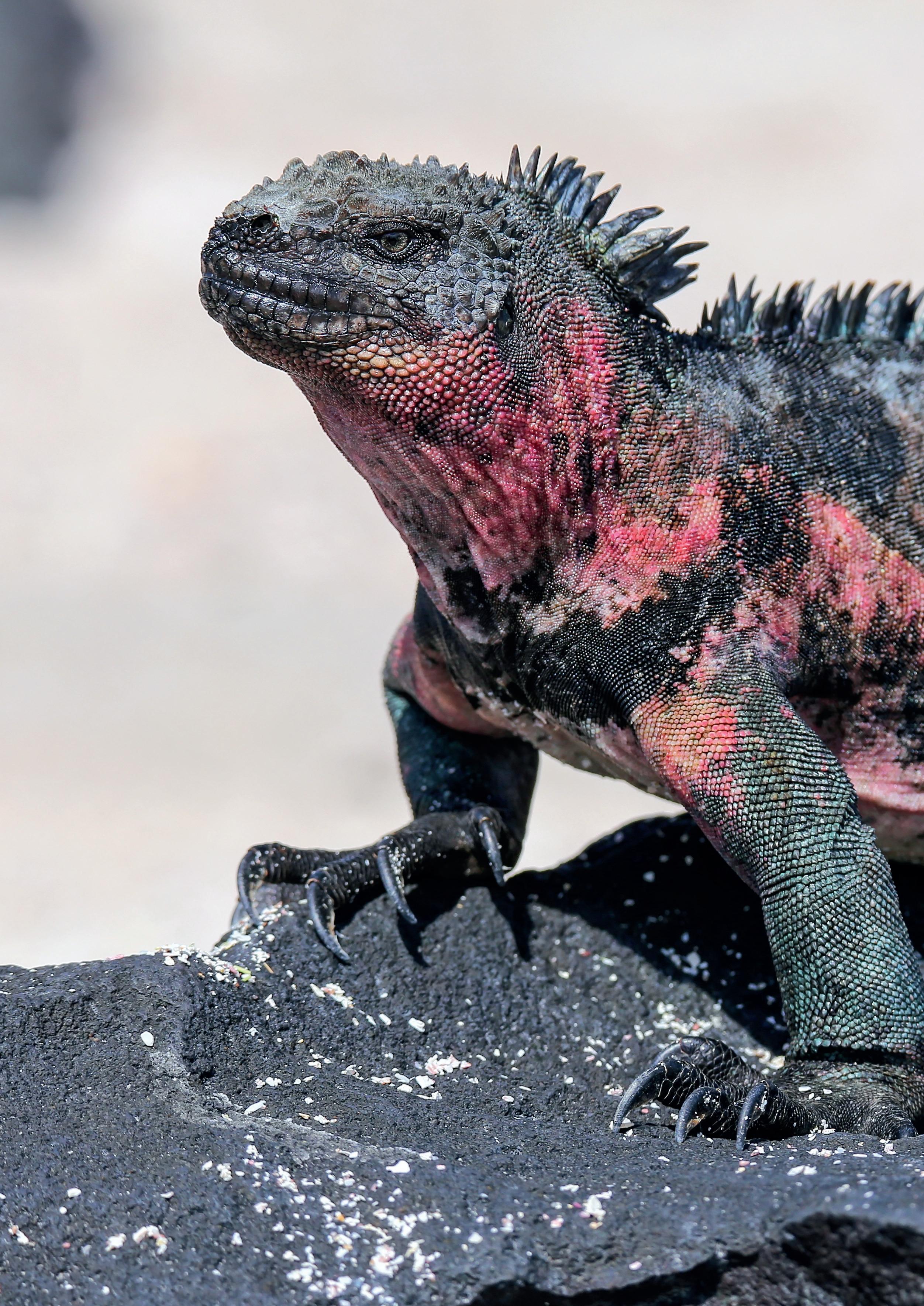 Marine iguana (Amblyrhynchus cristatus)
Marine iguana (Amblyrhynchus cristatus)
JURASSIC WORLD
A Living Museum in the Pacific.
 By Hannah Rudd
By Hannah Rudd
Hundreds of miles off the coast of South America, lies a chain of islands that resemble a living museum. First discovered in 1535, the Galápagos Islands are a world-famous archipelago that are revered by biologists the world over.
They have been the focal point of humanity’s understanding of the natural world and have marked their place in natural history through being the birthplace of Darwin’s theory of evolution by natural selection following his visit in 1835.
What makes this rugged landscape so biologically enticing, both above and below the waves, is its raw uniqueness. Because of the island’s remoteness, many species have evolved through speciation and so are found nowhere else on the planet – termed ‘endemism’. Indeed, the Galápagos Islands are home to some of the highest levels of endemism in the world. Here you will find gigantic Galápagos tortoises (Chelonoidis .spp), prehistoric marine iguanas (Amblyrhynchus cristatus), and the charming Galápagos penguin (Spheniscus mendiculus) – to name just a few. Approximately 97% of the reptiles and land mammals, 80% of the birds and more than 30% of the planets found on the islands are endemic, according to the Galápagos Conservancy. The archipelago offers a precious insight into the inner workings of the natural world and is an irreplaceable treasure on Earth.
The Marine Iguana –A Dinosaur in the Modern Age
Take a look along the rocky shores of the many islands that make up the Galápagos archipelago and you are sure to find a colony of creatures that resemble Godzilla. Found only on the Galápagos Islands, the marine iguana is a sight to behold. Being the only lizard on Earth that spends time in the ocean, they are an iconic species that have adapted to life in the hostile environments of the Galápagos.
In fact, sub-populations on these remote islands have been isolated for so long that each island has evolved its own subspecies with each having an individual pattern that combines shades of red, green, black, and grey. As they mature, their colouration becomes more vivid, particularly during the breeding season. Living for twelve years on average, but known to live as long as sixty years, marine iguanas reproduce by laying a clutch of two to three large eggs which hatch between two and a half and four months later.
38 DECEMBER 2021 Jurassic World
Despite their fierce appearance, marine iguanas are herbivores that survive exclusively on underwater red and green algae, and seaweed. With a short, blunt nose, they are well-adapted to feeding on the algae growing on underwater rock faces. On occasion, marine iguanas have been observed to feed on crustaceans and grasshoppers, as well as terrestrial vegetation, although this is typically in times of food scarcity. They have a remarkable ability to swim in both subtidal and deeper, icy cool waters to feed. Their flattened tail provides extra propulsion and their legs hugging their body offers improved water dynamics so they can glide through the water with ease. Charles Darwin noted in his expedition log aboard the HMS Beagle that marine iguanas moved using a ‘serpentine movement, like an eel’ and commended their elegant appearance in the water. But it wasn’t always this way. When their ancestors washed ashore on the Galápagos, they were solely land-dwelling creatures. It was only through necessity that they evolved the ability to traverse the ocean in search of food.
Like other reptiles, marine iguanas are ectothermic, meaning that they rely on the warmth of their

environment to heat their bodies. Despite their remarkable adaptations, a 10-minute dive is approximately the longest they can manage in the cool depths of the Pacific Ocean before they begin to lose control of their muscles. Once at the surface, the marine iguana must then fight the perilous surge as it crashes against the coast and must avoid larger predators like Galápagos sea lions which often like to play with the iguanas like a toy.
Once ashore the marine iguana can begin its ascent to the colony before commencing its recuperation period. As they bask in the sunshine whilst recharging from their oceanic feeding time, marine iguanas can be observed “sneezing”. This is yet another of their compelling adaptations - their efficient salt glands. During feeding underwater marine iguanas engulf a significant amount of saltwater. The salt must be removed from their bodies otherwise it could build up and lead to dehydration, particularly in a hostile environment where freshwater is scarce on land. To do this, the marine iguanas have evolved salt glands which they use to expel the accumulated salt from their bodies.
39 DECEMBER 2021
Galápagos tortoise (Chelonoidis .spp)
Overcoming the Impossible Marine iguanas are already impressive animals, but they do have another remarkable adaptation which is less well-known. The Galápagos Islands are located within the convergence zone of several major currents – the most well-known being the Humboldt Current. During El Niño events – a periodic climatic event that results in unusually warm surface waters in the eastern equatorial Pacific Ocean – there is reduced food availability as these warmer waters lead to a reduction in the marine iguana’s favourite food - red and green algae. This reduction in food availability can cause many animals to die by starvation and under these conditions up to 90% of their population could perish. This last took place on some islands in 1998, and under climate change its projected that these events could increase in frequency. The larger an animal is, the higher its energy demands, and so the more food it requires. In order to combat their lack of food, marine iguanas seemingly do the impossible – they shrink. Not only does their total weight reduce, but their total body length also undergoes shrinkage.
How do they achieve this incredible feat? As only 10% of the marine iguana’s length is comprised of cartilage and connective tissue, scientists believe that this extraordinary adaptation is due to the iguanas reabsorbing their own bone matter. These smaller individuals are likely to survive longer than larger iguanas because of a reduced need for energy. The smaller iguanas can also forage for reduced food resources more efficiently than their larger counterparts, using even less energy. Once the ocean waters begin to cool and food resources undergo a resurgence, the marine iguanas body length increases once again. Throughout the course of their lives, marine iguanas can shrink and grow multiple times according to their surrounding climatic conditions.


But it’s not all good news. Despite these seemingly superhero-like powers, similar to many species inhabiting the Galápagos Islands, the marine iguana is listed on the IUCN Red List as a vulnerable species as a result of human pressures on their population. Introduced and invasive species like cats, rats, dogs, and pigs, which were bought to the archipelago by explorers are a considerable threat to marine iguanas. Many of these species predate on the adult marine iguanas and their eggs, attacking the population from all sides. Despite their ingenious



Jurassic World DECEMBER 2021 40
adaptation, the looming threat of climate change also continues to put pressure on their future. Not only does it threaten their food supply, sea level and temperature rise can also disrupt their nesting behaviour and egg development, as well as the iguana’s ability to regulate their body temperature. These factors can all contribute to the marine iguana’s premature demise.





Islands Under Threat
Despite feeling like the land that time forgot, the Galápagos Islands are not isolated enough to be removed from human activities. The very biodiversity that makes them unique is also what makes them so vulnerable to human pressures. Ecosystem degradation within the archipelago can be exacerbated by climate change, deforestation, overfishing, pollution, and invasive species, just to name a few threats. The islands have been the focal point of conservation efforts for decades, yet even in one of the most remote corners of the world the impacts of human activity can be felt. Protecting the Galápagos is of upmost importance and will set a precedent to the rest of the world – if we can’t protect one of nature’s most precious assets, what can we protect?
Climate Change
Climate change is projected to be the single largest threat facing the world’s biodiversity. Due to their geographical position, the Galápagos Islands are particularly vulnerable to the impacts of a warming ocean as they are situated in the confluence of several major ocean currents. These alterations in ocean temperature can have devastating effects on the wildlife of the Galápagos through rising sea levels, increased oceanic acidity, and the creation of oxygen minimum zones. One of the biggest problems created by climate change is a reduction in food availability. Whilst some species can migrate away from the archipelago to find food, others cannot. Species like the flightless cormorants and the Galápagos penguin are unable to fly elsewhere and can struggle to find food. This reduction in available energy also often leads to a decrease in reproductive capability, putting further pressure on a species future.
Jurassic World 41 DECEMBER 2021
Overfishing
Surrounded by the Galápagos Marine Reserve - one of the largest marine protected areas in the world - the Galápagos Islands are brimming with diverse life below the waves. Yet with staggering biodiversity comes a desire for exploitation. Overfishing – that is the removal of a species at a rate which exceeds its natural ability to repopulate - and illegal fishing are serious threats to the fragile marine life that inhabit this area. There is no group of marine animals that feels this threat more severely than sharks. The Galápagos Islands are home to one of the highest concentrations of sharks in the world and as a result they are a hub of illegal fishing activity as boats congregate here from around the world to fish sharks for their fins to meet the demand on the Asian market. But it is not only illegal fishing that is a threat to species living within the Galápagos Marine Reserve. Many shark species that can be found inhabiting these waters are also migratory. Once they leave the confines of the Galápagos Marine Reserve, they are swimming ducks where enormous fishing vessels are waiting to capture them. Tightening up international agreements on protections for migratory species is an urgent necessity to protect these endangered animals moving forward.

Plastic Pollution
Plastic pollution is suffocating our global ocean and the Galápagos is no exception. Within the archipelago plastic pollution such as plastic bags, fishing line and plastic bottles can have a devastating impact upon the native wildlife of the islands. Much of the plastic debris is transported to the area by the strong ocean currents that allow it to drift across from the continents. Plastics can be misidentified as food by marine wildlife where it is ingested, or it can entangle animals where it can cause injuries that often result in death. According to the Galápagos Conservation Trust, at least 38 different species, including turtles, sea lions and marine iguanas, have been recorded ingesting plastic, entangled by plastic or inhabiting areas that are overwhelmed by plastic pollution.
Jurassic World
Invasive Species
On an archipelago where almost all the native biodiversity is highly specialised and adapted to the local environment, the introduction of invasive species can be a monumental problem. Invasive species like cats, goats and rats are often generalists which are stronger in comparison to endemic species like the marine iguana or Galápagos tortoise, which are specialists and can easily be outcompeted by generalists. Many of these species were introduced to the Galápagos by early settlers and explorers. Scientists have estimated that there are an enormous 1,700 invasive species across the Galápagos Islands today. The eradication and control of many of these species is incredibly expensive and once a species is established it can be difficult to completely remove their presence.
Mass Tourism
While ecotourism is often perceived as a good thing for wildlife conservation it can also have a dark side. Although the Galápagos are one of the most highly protected and monitored tourism destinations in the world, they are still at risk of experiencing the aftereffects of mass tourism. Approximately 30,000 people inhabit the Galápagos and during normal times the Islands received almost 200,000 visitors per year. Although ecotourism supports local jobs and livelihoods, brings millions into the economy, and can be used as a vehicle to raise environmental awareness, it also puts even further pressure on the archipelago. Increased development of coastal areas due to heighted demand, the creation of more pollution by tourists and hotels, and disturbance to local habitats and wildlife can be deeply problematic for the fragile biodiversity here if not managed properly.

Jurassic World
DRY FOODS, FORMULAS & SUPPLEMENTS


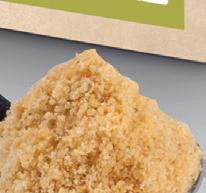

Not all parrot food is created equal. The Psi�acus range of complete parrot foods features over 50 dis�nct products which are widely regarded as the best on the market.













For over 20 years Psi�acus have developed and refined the range at their dedicated research laboratory and extensive breeding facility, along with collabora�on with other respected breeding centres.




The result is a range of pelleted complete diets with proven benefits including:










Speed of growth of the young, its weight and overall development | Improved appetite and increased daily consumption



Improved digestive processes | Prevention of the bacterial and fungal proliferations in the craw







Improved plumage quality, general appearance and behaviour | Improved reproductive success


































44 DECEMBER 2021
FASCINATING FACT
Endosymbiosis in Salamanders
Researchers at the American Museum of Natural History have discovered an unlikely relationship between spotted salamanders (Ambystoma maculatum) and green algae (Oophila amblystomatis), which begins while the salamander is still in the embryonic stage.

Described as ‘endosymbiosis’ the algae have been observed growing within the salamanders egg. This process, which is the equivalent to plants growing within the womb, is visible to the naked eye and has puzzled scientists for hundreds of year s.

In a recent study lead by John Burns, the researchers discovered that the stressed algae cells altered their way of converting food, suggesting they have adapted to support the baby salamander. In contrast, the salamander possesses several genes that would prevent an immune response, suggesting that the salamander benefits from the algae being there and has thus adapted to host the encroaching algae cells. Although work is ongoing, it is believed that the algae benefit from having access to more nitrogen, allowing it to grow denser than in the surrounding water. This nitrogen is then converted to oxygen which of course benefits the growing salamander.
One of the strangest puzzles of this phenomena is understanding how the algae made it into the egg in the first place. To figure this out, the researchers put some of the eggs under a microscope where they discovered the algae cells managed to develop, not
just within the egg cells, but within the cells of the salamander itself. This is a process that is common within corals and some clams but is extremely rare amongst vertebrates.
By dividing the cells into four separate groups (salamander cells with algae, salamander cells without algae, algae cells in freshwater and algae cells inside the salamander egg) and counting how many types of RNA were in each cell, the researchers began to uncover more about the relationship. For example, the algae cells, after entering the salamander cells, turn off the genes associated with importing inorganic nutrients because they do not require them in such a nutrient-rich environment.
Researcher, Eunsoo Kim told AMNH Life Series: “We are learning that these two fundamentally different cells are changing each other really dramatically and this change may be relevant for other symbiotic systems including human and parasitic relationships.”
We have long understood that humans are covered in and filled with tiny, microscopic creatures which have a huge impact on our physical health, but could these have influenced our entire course of evolution? By better understanding the relationship between algae and the spotted salamander, we may one day better understand the impact of tiny microorganisms on the entire human race.
The full research paper can be found at: https:// elifesciences.org/articles/22054
45 DECEMBER 2021 Fascinating Facts
ENRICHMENT IDEAS
Dietary Enrichment (Carnivores)
Enrichment is the pinnacle of good animal welfare. It converts husbandry goals from “keeping an animal alive”, to “allowing the animal to thrive”. Enrichment is a broad term and a multi-faceted approach is key. Enrichment doesn’t just benefit the animal, but gives us keepers new and exciting ways to interact or observe our animals. In this new monthly feature, EK discusses some of the best enrichment ideas that are being used today. Please submit your own ideas to thomas@exoticskeeper.com
1. Nest feeding corn snakes
There are multiple ways of recreating a ‘nest’ for species that would typically raid them. For snake species used to rats, feeding several pinkie mice in a small tub/hide and placing it either below the substrate or in an elevated position can simulate this. This will prompt natural foraging behaviours and is also a brilliant way to get some snakes feeding in a more organic way. Of course, each individual snake will have a slightly different temperament when it comes to feeding, but removing the animal from its enclosure, creating a scent trail and hiding a ‘nest’ is ideal for more adventurous snakes.
2. Hanging weaver nest
Many zoos use hanging weaver nest birdboxes and place insects or treats in them for a whole host of species. Arboreal monitor lizards can really benefit from having to think strategically about getting to the prey item. This enrichment method can be used with a whole host of food items relevant to the animal. Quail eggs and chicks make for an authentic experience, but large insects can be equally as enriching.
3. Mealworm/worm dispensers
There are loads of excellent enrichment ideas that span all taxa. For example, dog puzzle boards can be manipulated by clever species to get to a treat. Parrots, monitors and small mammals would certainly have the cognitive ability to solve these puzzles. However, for more conventional pet species, various brands create mealworm dishes that slowly release the feeder insects over time. This replicates wild conditions where there is no structure to the availability of food.
4. Irregular feeding patterns
Those who only keep one, or a couple of animals can ensure greater levels of enrichment by using an irregular feeding pattern. Many of us do this anyway, but once a keeper is confident in how much they should be feeding their animal and how responsive that animal is, breaking up mealtimes is a much more natural way of feeding. Combine this with a huge spectrum of different feeder insects and we can provide dietary enrichment in some of the simplest ways.
5. Tree-feeding royal pythons
Male royal pythons (Python regius) are at least semiarboreal by nature. Not only is their diet comprised of up to 70% nestling birds, but field research suggests that males are most found in trees. Young specimens (shorter than 70cm in length) have a diet comprised of almost entirely nestling and hatchling birds. In captivity, we should be replicating that behaviour as best we can by placing food items or using tongs at high vantage points in the vivarium. Bringing royal pythons out to climb frames or even trees on sunny days is majorly beneficial. Keep in mind that chicks are extremely fatty, so while they would feed on these in the wild, a mixed diet is recommended.

46
Enrichment Ideas
SPECIALITY PET PRODUCTS





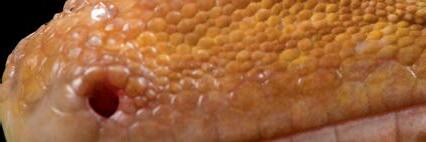
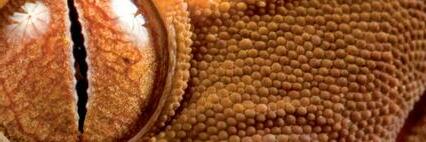

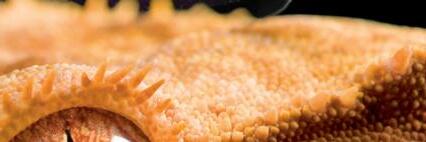











With 20 years of research and development Repashy Superfoods have refined the ultimate range of premix reptile diets, inset gutload formulas and supplements. Fortified with vitamins, trace elements and minerals.

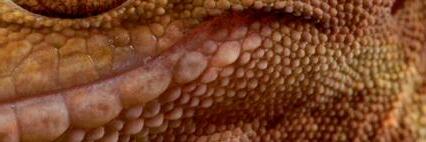












































































































 The Big Freeze
Gray tree frog (Hyla versicolor)
The Big Freeze
Gray tree frog (Hyla versicolor)















































































 Panther chameleon (Furcifer pardalis)
Panther chameleon (Furcifer pardalis)




 Ring-necked parakeet (Psittacula krameri)
Ring-necked parakeet (Psittacula krameri)











 Marine iguana (Amblyrhynchus cristatus)
Marine iguana (Amblyrhynchus cristatus)
 By Hannah Rudd
By Hannah Rudd



























































































































